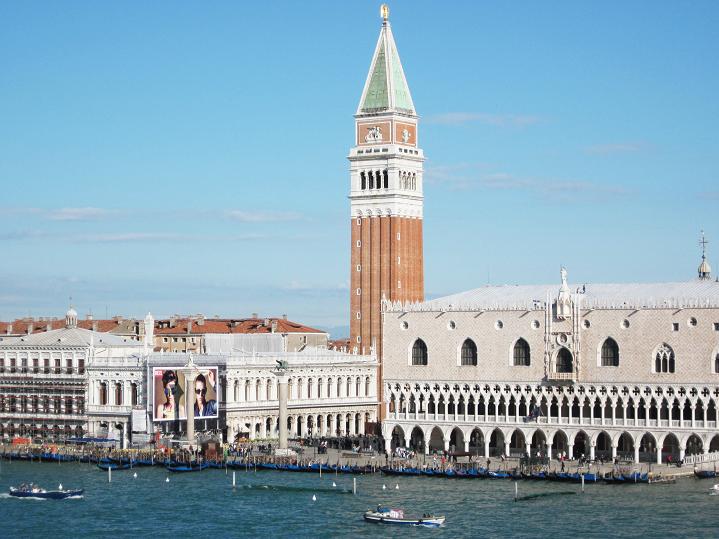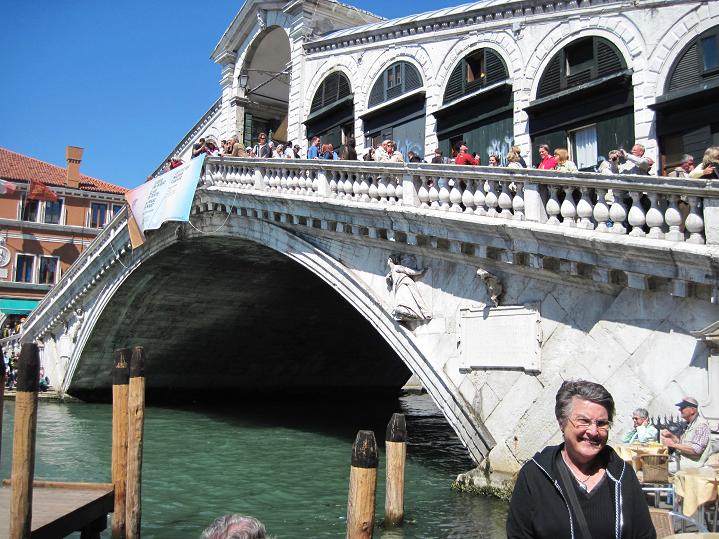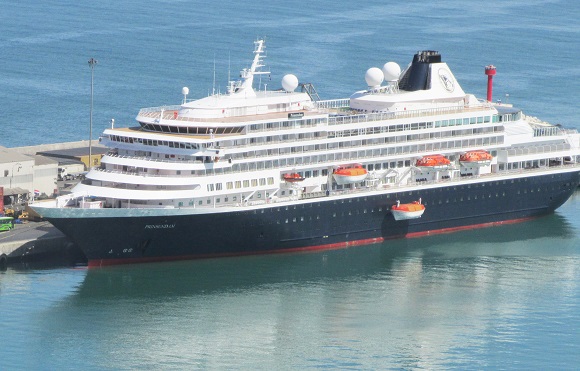
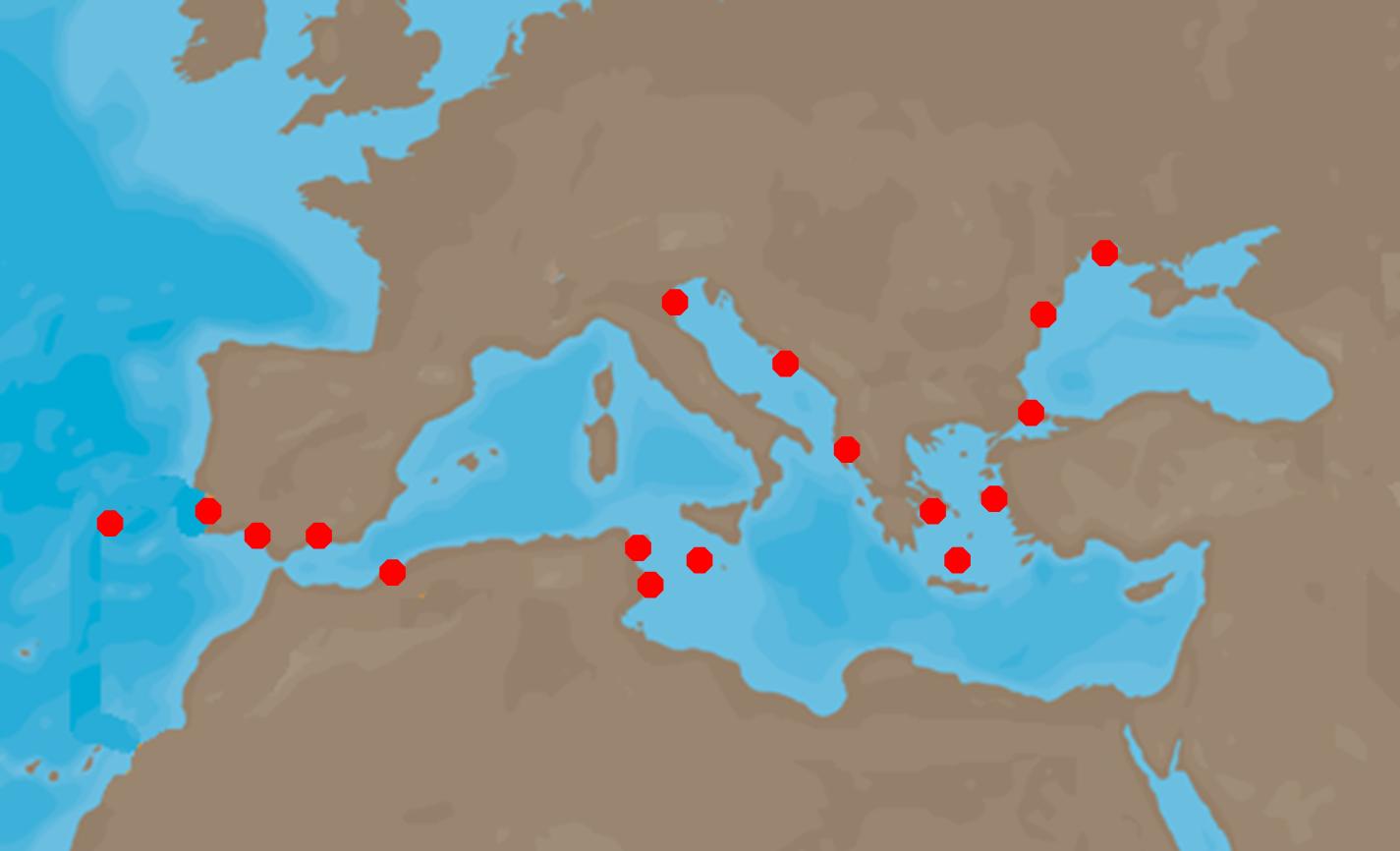
And then to keep the excitment up, the next day the Captain announced we were altering our course to take us to Bermuda, to take a passenger who needed immediate medical attention off the ship. A pilot-rescue boat met us about 10 miles outside the harbor, and the woman was transferred off in a stretcher. No one knew for sure, but the rumor was that she had fallen and broken her hip.
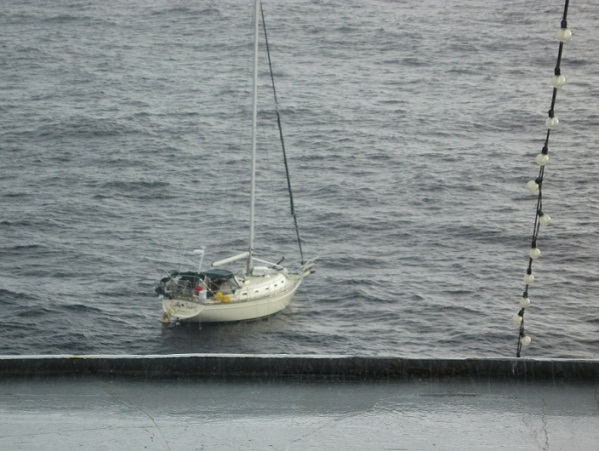
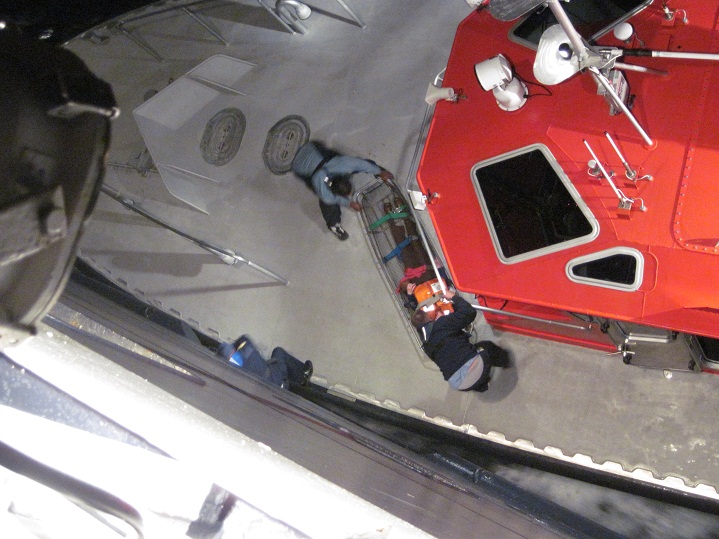
Our first port of call was the town of Funchal, on the Portugese island of Madeira (famous for its desert wines). This was the first of several stops where Sandy had reached out to local guides, and pre-arranged private tours for us and some of our friends on the ship - much cheaper, and often better, than the ship's bus trips.
We took a tour around the town, marveling at the scenic views and how practically every inch of this volcanic island is being used, often for agriculture. Another thing Madeira is famous for is sliding down from the top of the mountain in a wicker basket -- guided by two men, sort of toboggan-like, but along city streets. Here's Mike and Sandy zooming down the street.
. We left Madeira after dark, heading for mainland Portugal.
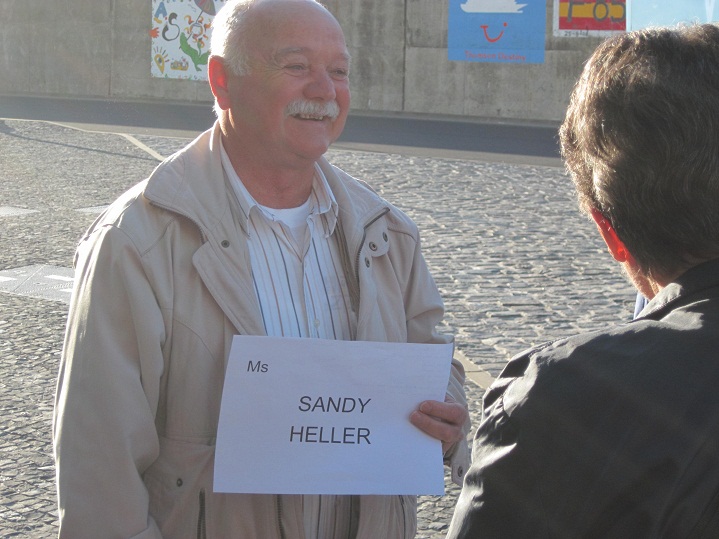
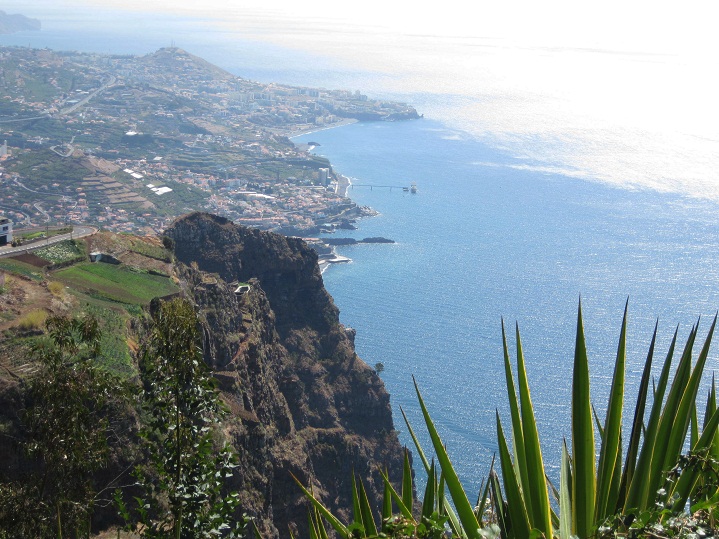
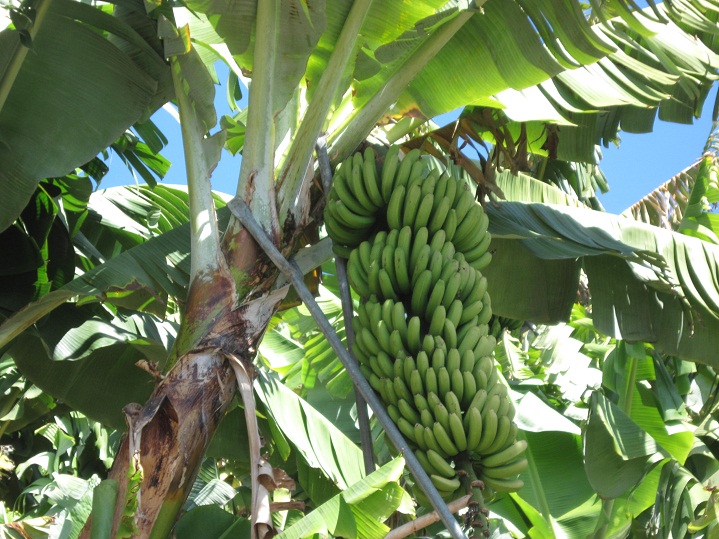
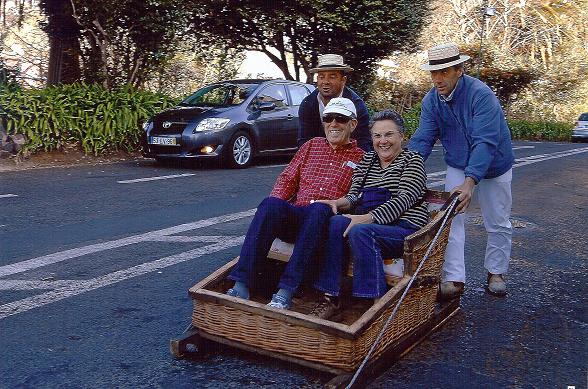
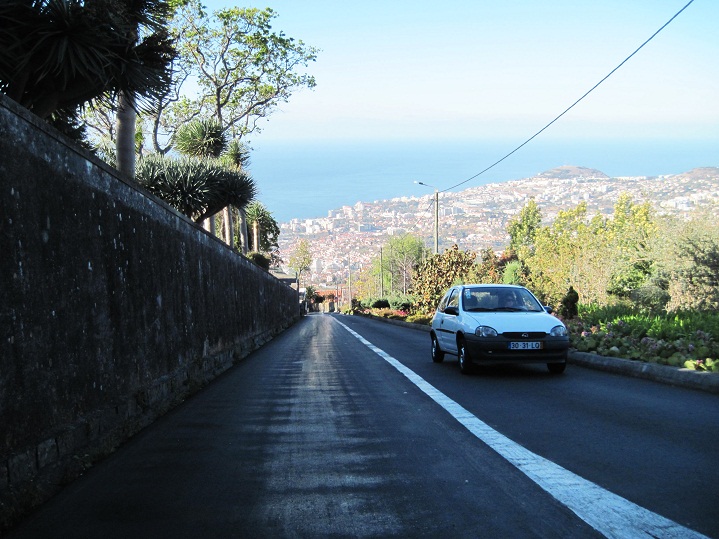
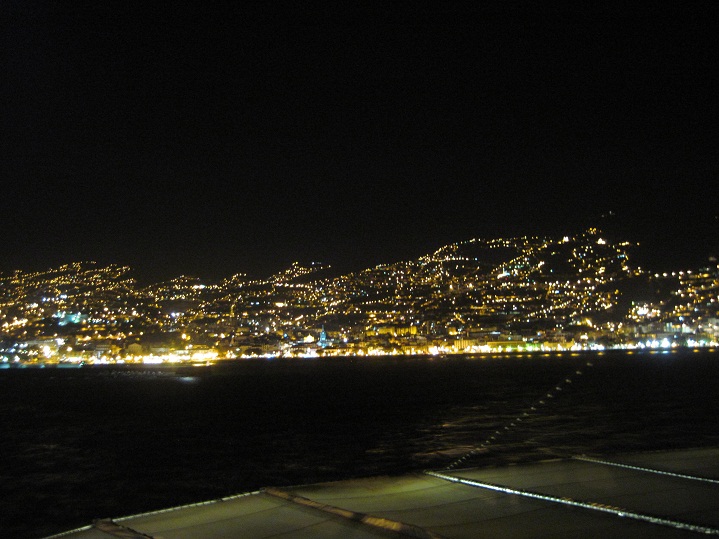
But excitement returned the next morning in the form of a sinking fishing boat. This dramea unfolded in two steps -- getting the 8 crewmen off their Zodiac lifeboat and onto our ship, and then getting them off our ship. The first part was easy, as our ship has cargo doors that are practically at water level, so once the Zodiac was alongside, it was pretty easy to jump over. The next step was more dramatic, involving a Portugese Coast Guard helicopter that flew out to meet us and take on the fishermen.
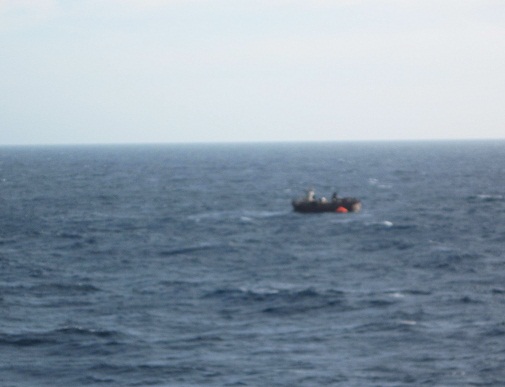
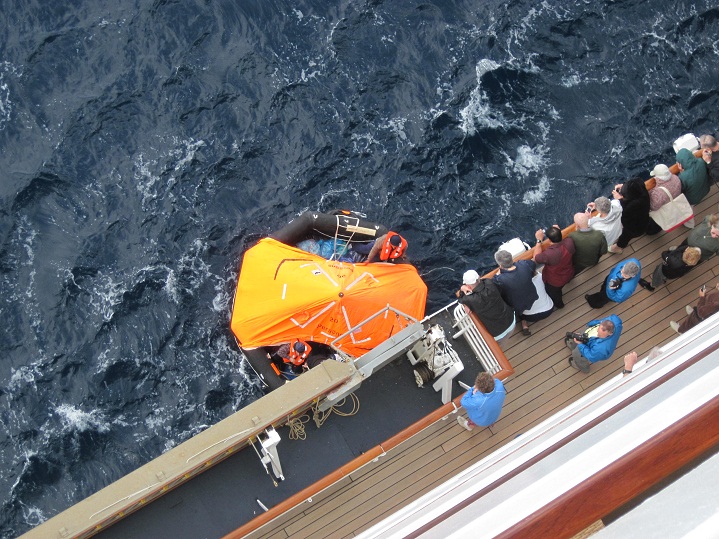
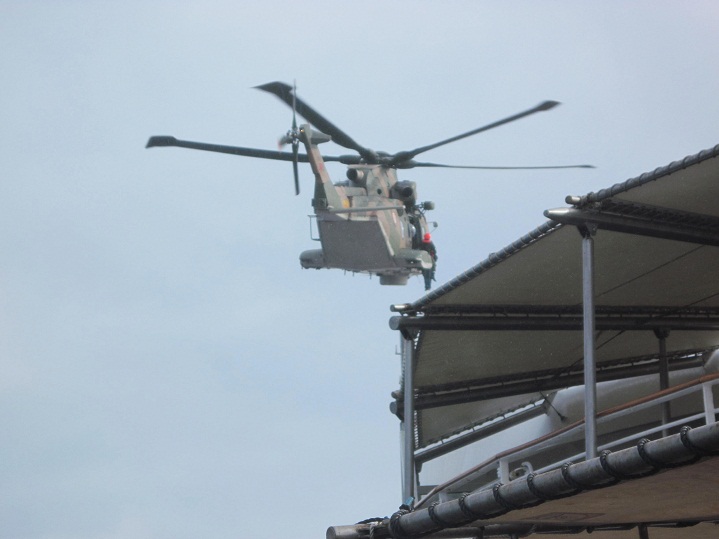
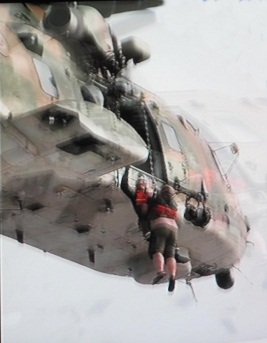
We were due into Portimao, Portugal, the next morning, but the Captain announced that, due to high winds and a narrow river channel, we were going to bypass that port. We turned, and headed for the following port, Cadiz, Spain (which the natives pronounce as "Ka-deeth.")
Cadiz is a big port city, and bills itself as the oldest continuously inhabitated city in Europe, having been founded by the Carthaginians more than 1000 years ago. It's the port where Christopher Columbus set out on his second voyage to America.
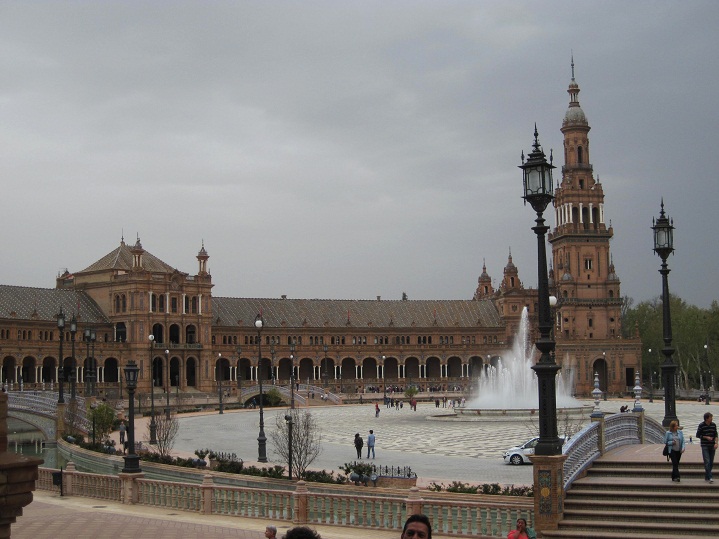
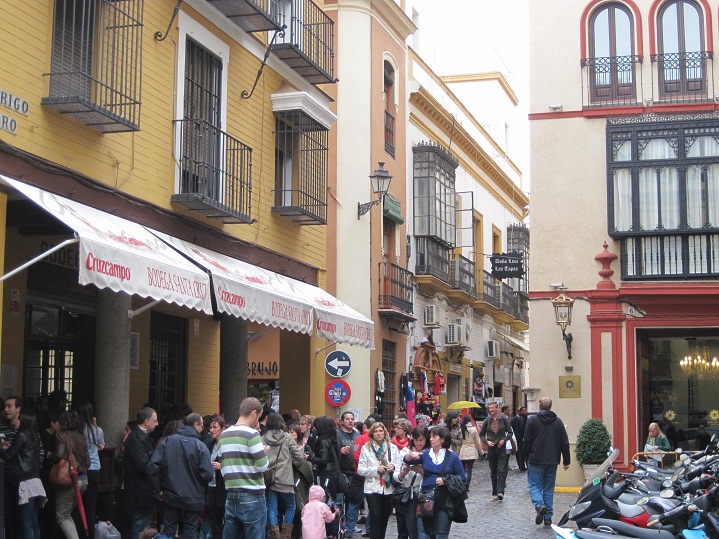
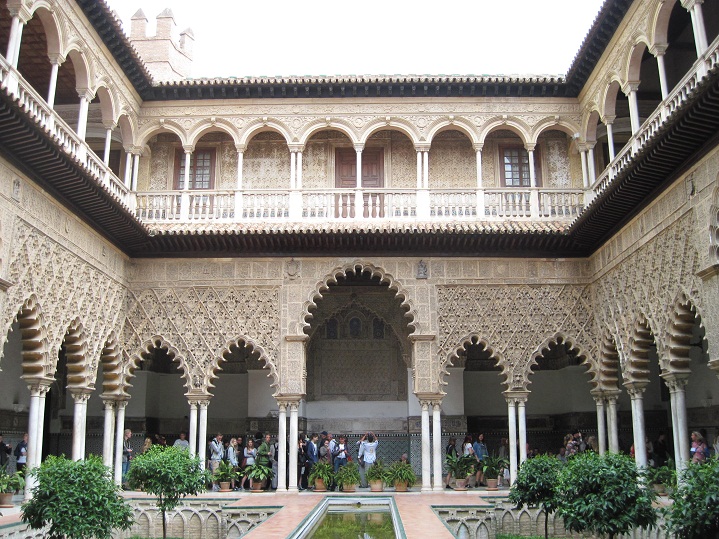
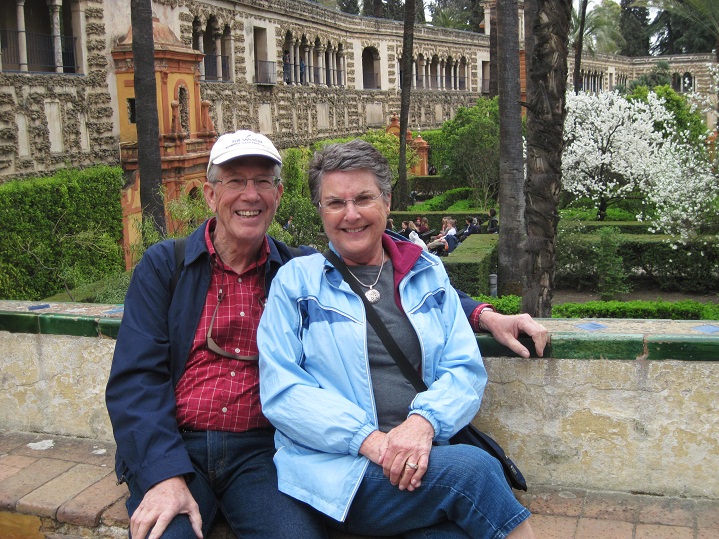
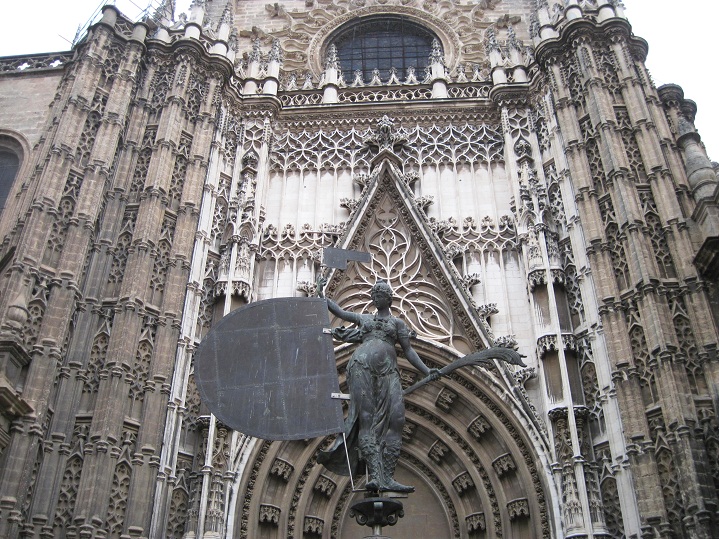
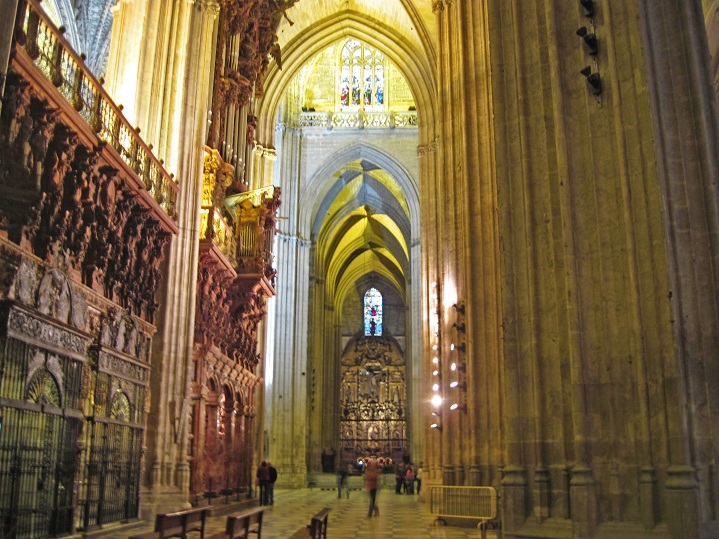
Back to the ship for the night (local Flamenco dancers were the entertainment), and the next day was our chance to do some walking around in the historic area of Cadiz. Sandy did find a shop to check out, but didn't end up buying anything.

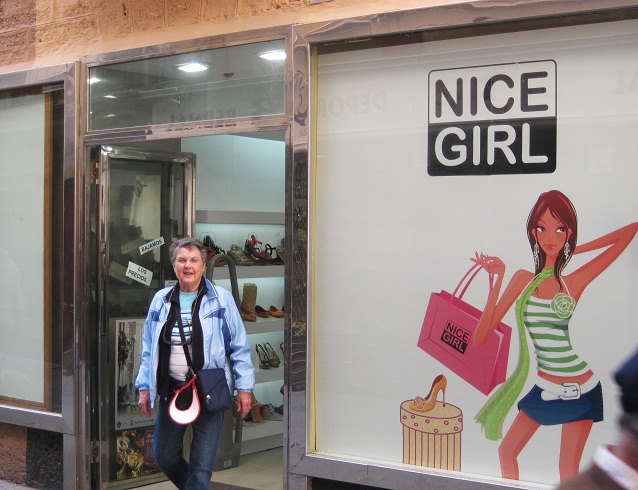
Next we sailed through the Straits of Gibralter, and were finally in the Mediterranean. We head for the north coast of Africa and the port city of Melilla. Although administered by Spain, this tiny city is surrounded by Morocco. Like Barcelona, it is filled with buildings designed by Gaudi or his students. Sandy was interviewed on Spanish TV while we toured the old fortress. And Washington could learn something from the triple-fence that lines the border with neighboring Morocco.
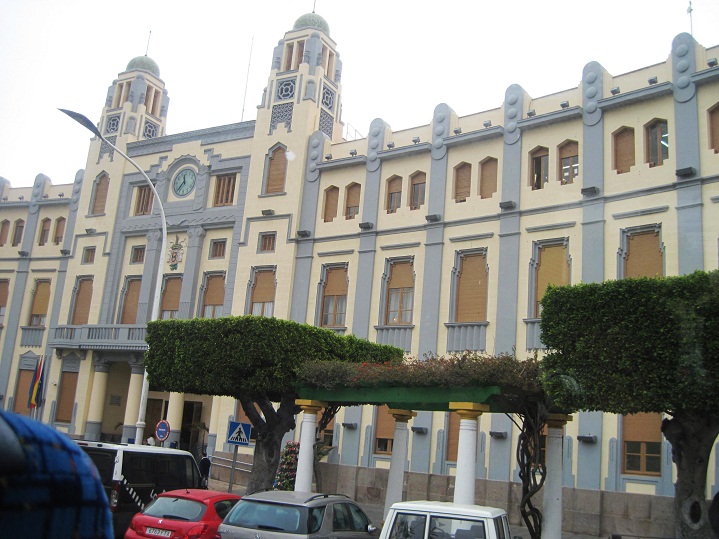
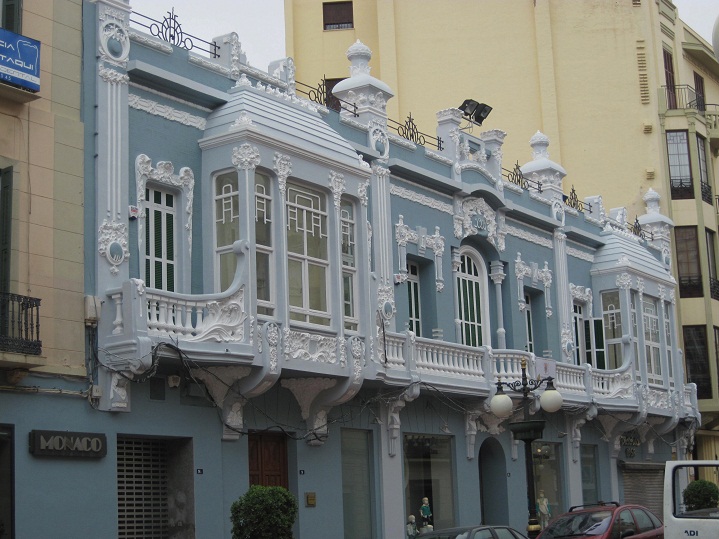
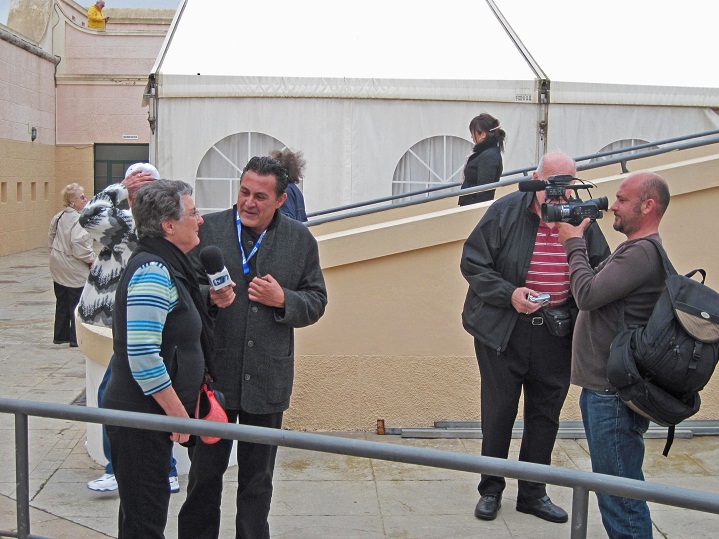

Next it was back north to "mainland" Spain, where we stopped at the Spanish port of Cartagena. (Yes, this is a tiny port, but with our rather small ship, we can visit some of the smaller, lesser-traveled ports.) Cartagena was a pleasant city with a medieval castle on the hill overlooking the harbor, ruins of the earlier Roman town (including an amphitheater), and a nice "pedestrians only" shopping street -- where the local version of the Dollar Tree Store was to be found. What is purportedly the world's first submarine was invented here back in 1888.
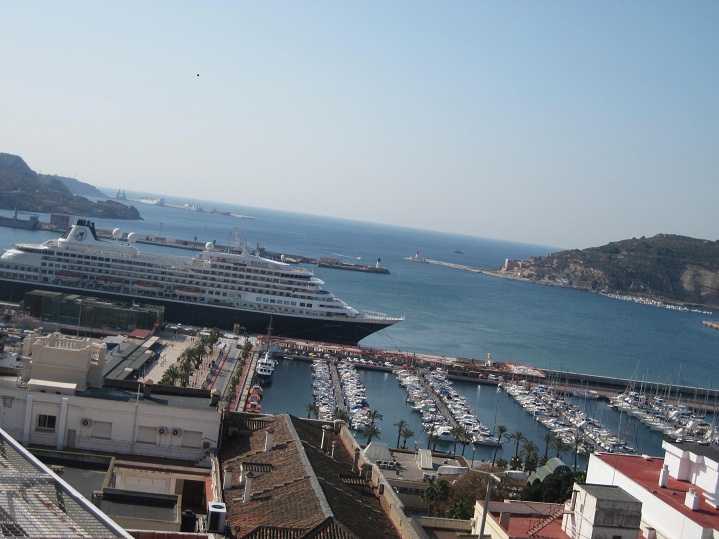
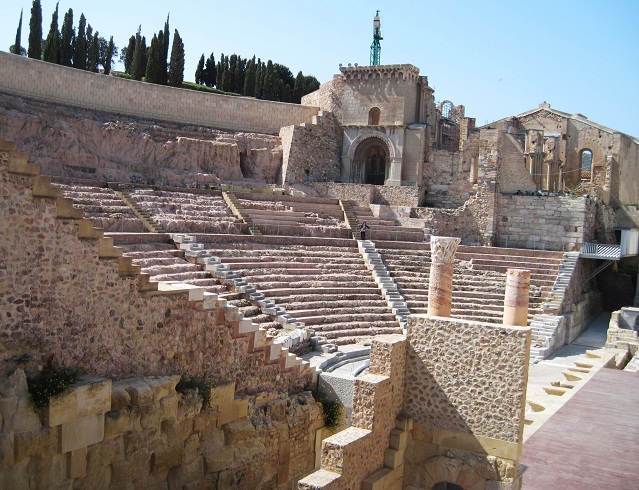
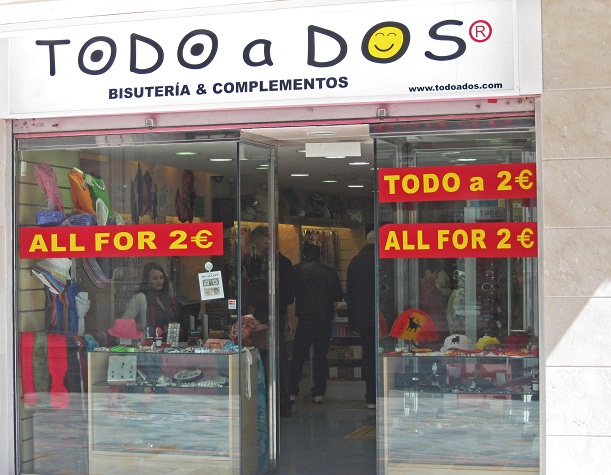
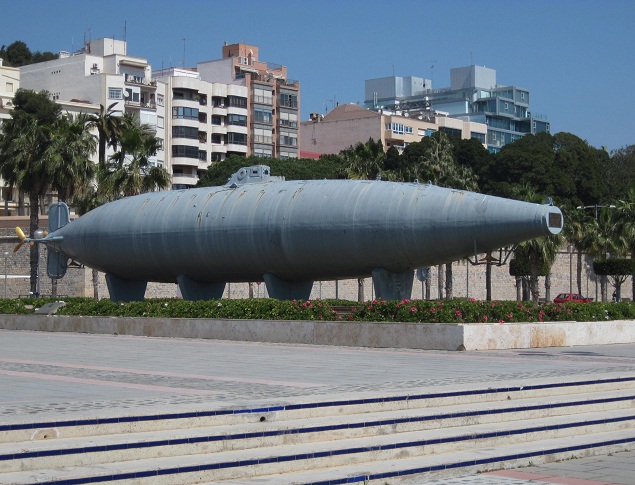
Another day at sea, as we traveled further east, and back to the south side of the Mediterranean headed for Tunisia. On the Prinsendam, you quickly meet practically everyone on board -- sort of a small-town feel. We had a nice group at our table, including a couple that gave us inspiration -- he's 82 and she's 78, and still doing everything in sight! Of course our room stewards made us cute towel animals at night, we had lots of entertainment in the evening (this is a London West-End performer singing), and silliness on theme nights.
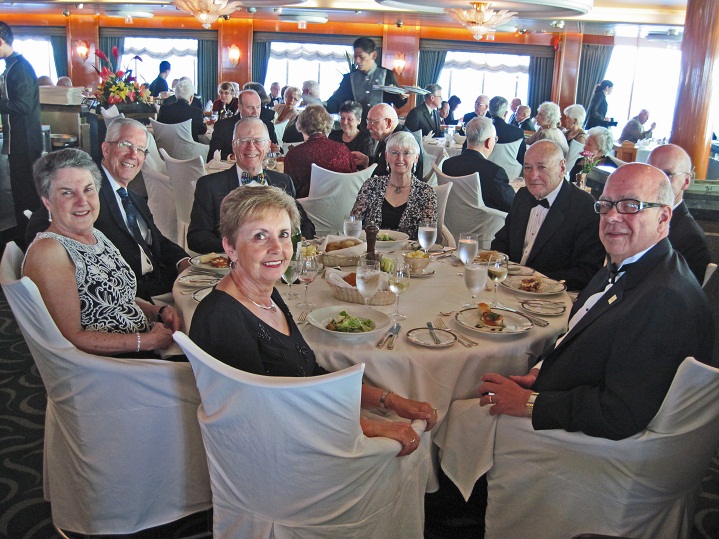
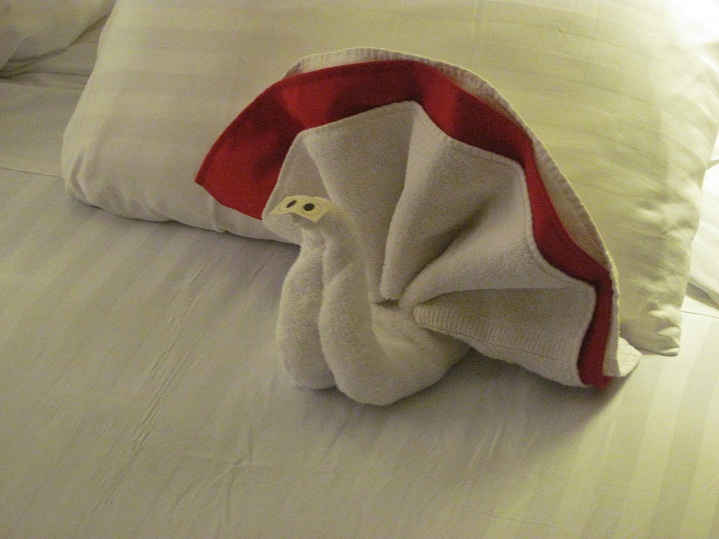
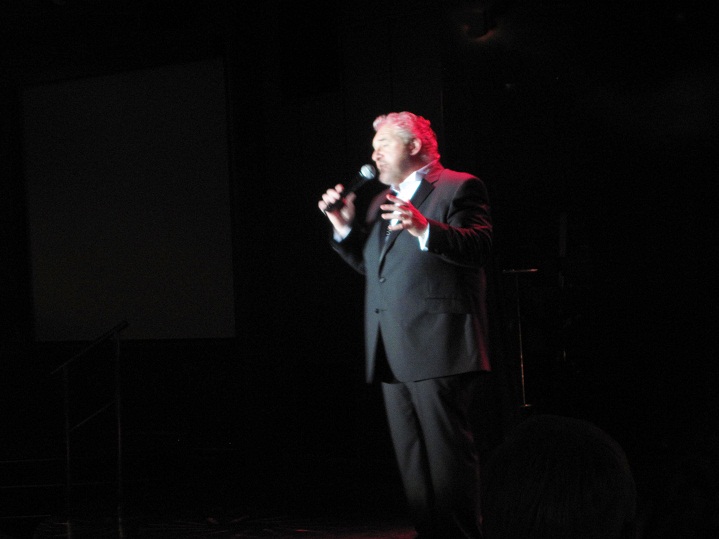
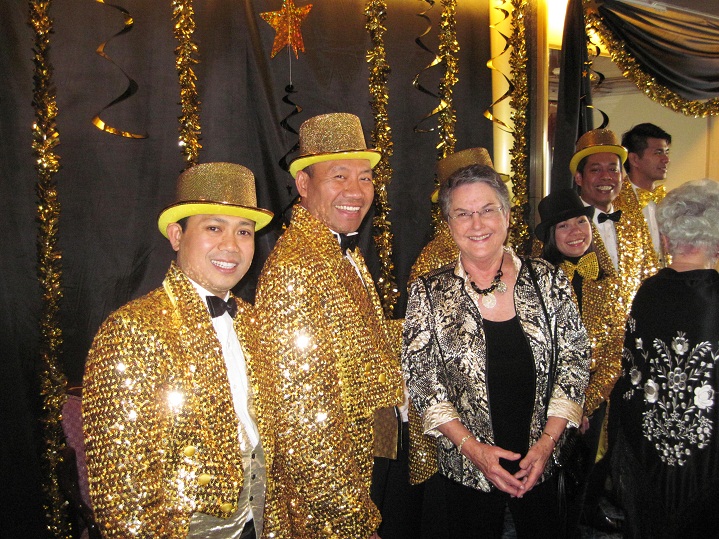
We had two ports to visit in Tunisia, first Sousse, and then Gabes (pronounced "Gab-S"). Sousse is rather unremarkable, but just outside of town is a big, well-preserved Roman Colliseum, a copy of the one in Rome, just a bit smaller (only sized for 35,000 spectators). It was built here not for the residents, who never numbered that many, but to impress travelers, as Sousse was a cross-roads of numerous camel caravan routes crossing this rather arid area. A nearby museum shows well-preserved Roman mosaics.
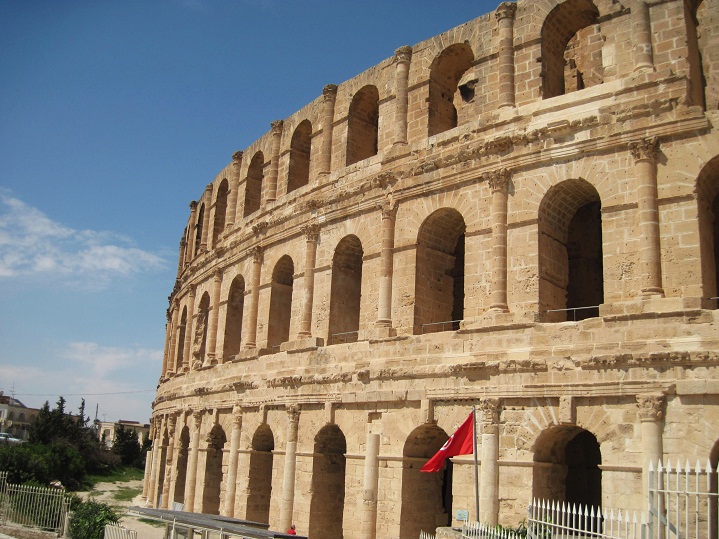
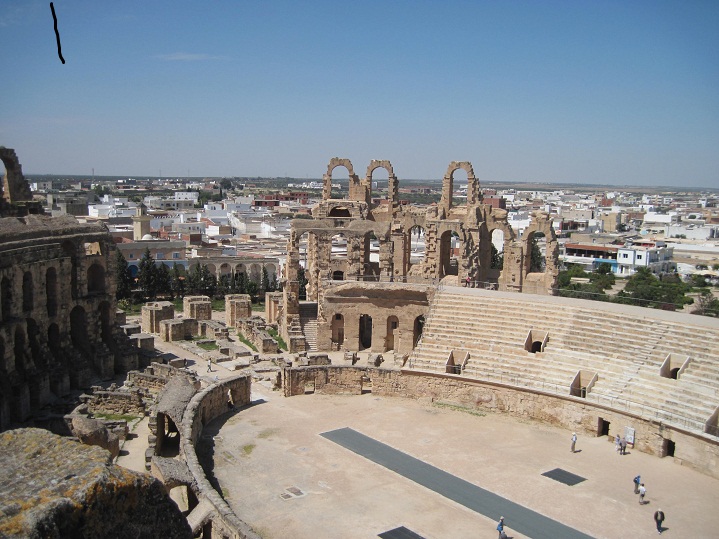
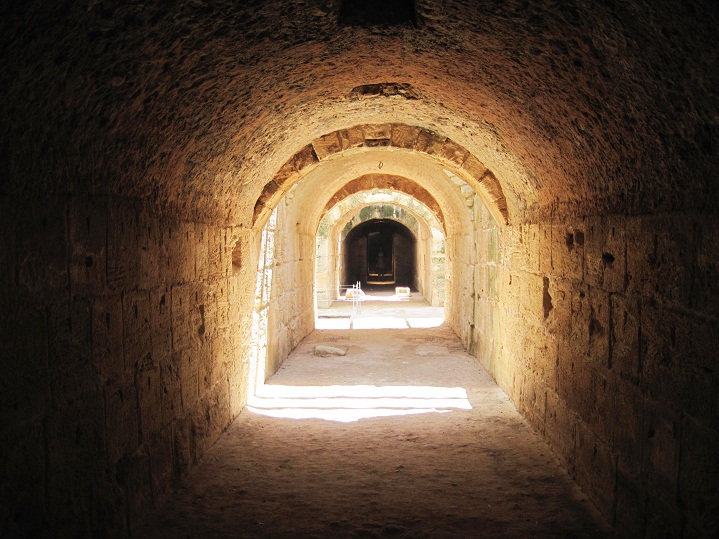
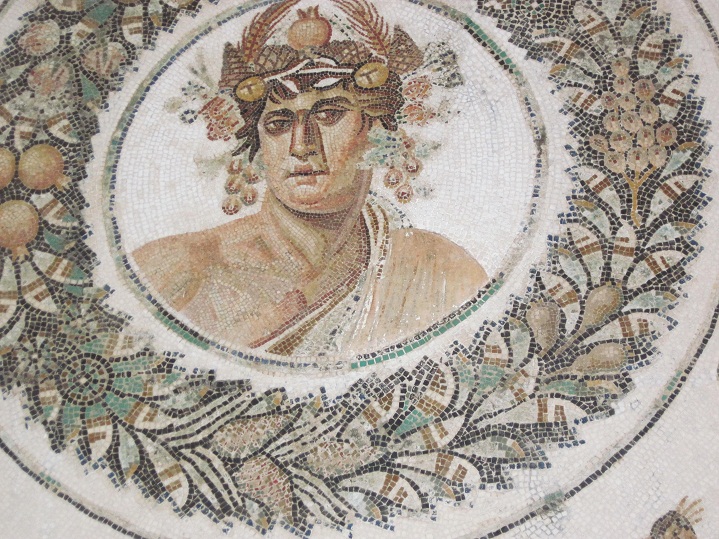
Gabes is quite different, being an industrial port, an agricultural area (millions of date palms and fruit trees), and the "gateway to the Sahara Desert" (which explains why several of the Star Wars movies were filmed nearby). with some residents still living in cave houses.
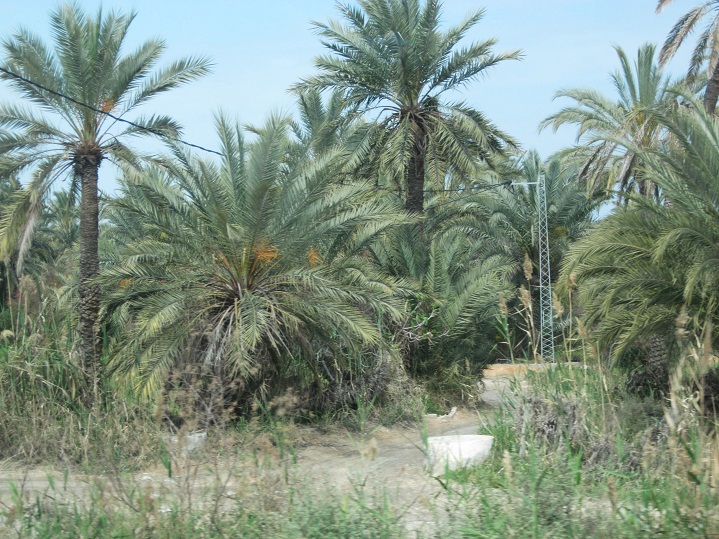
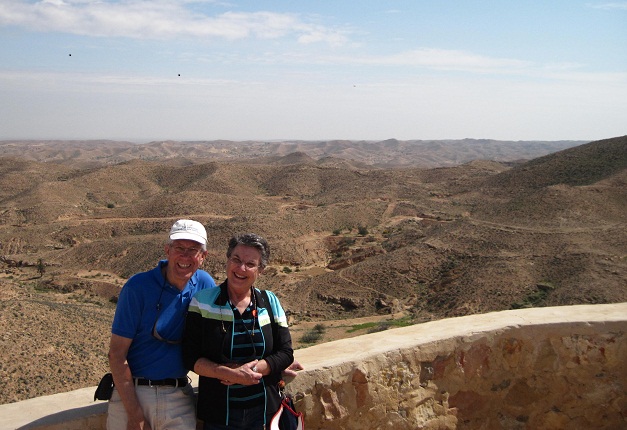
Next stop was the island nation of Malta, known to history buffs as the headquarters of the Knights of Malta. What a delightful place this was -- loads of history, and a bit like Italy, but everyone speaks English! We had a great guide, and lots of fun. This is a spot that goes on the "we come come back and spend more time here" list.
Here's views of the two sides of the harbor, as seen from our ship, plus a street scene in the town, a shot inside the Grandmaster's Palace, a fishing village on the "back" side of the island, and ruins on the neighboring island of Gozo that date from 3600 B.C.

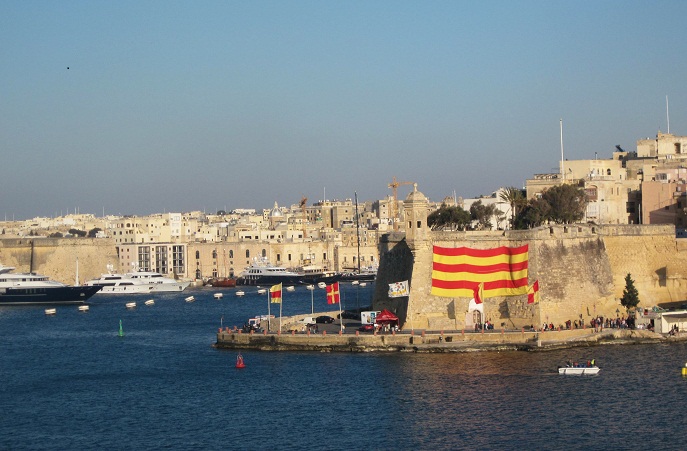
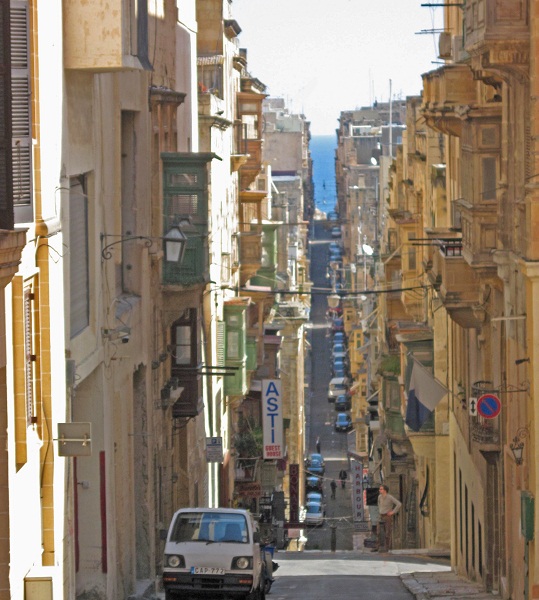
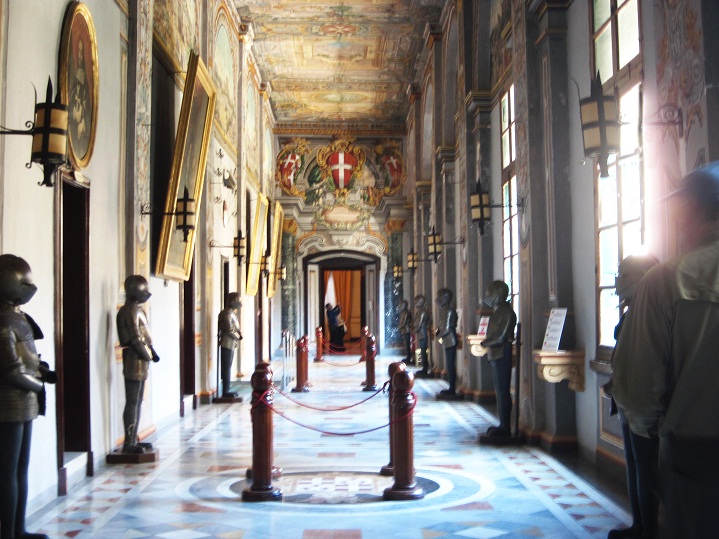
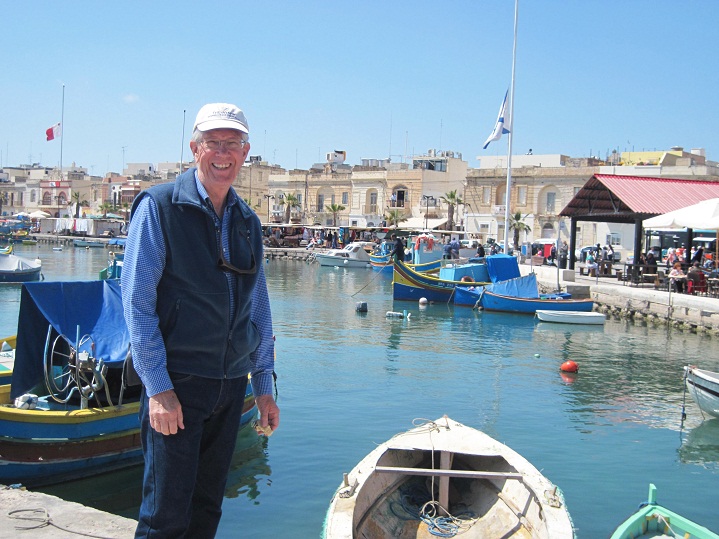
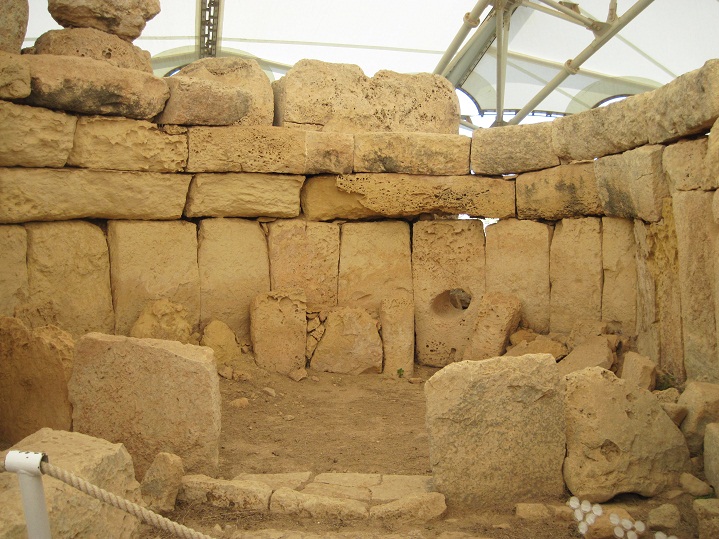
The next port was one we have visited quite a few times - Kusadasi, Turkey, known as the port for the ancient city of Ephesus. Since we have visited several times in recent years, we decided on something different, and Sandy organized a tour out to Pamukkale ("paa-moo-calie"), a nearby old Roman spa town. Most of the town's layout can still easily be seen, including the always-present big amphitheater. The hot mineral waters have been cascading down the hillside for centuries, leaving behind calcified deposits. This town was fun to visit, as the hot mineral springs continue to be active, giving us the sight of modern-day tourists in bikini's, laughing or enjoying a glass of wine while soaking, directly next to the ruins of the Roman spa town from about 2000 years ago.
On the return to town, we saw snow on the peaks of the surrounding mountains. And back in town, Sandy lost control, and bought a beautiful Turkish rug (here being signed, as it is being shipped home).
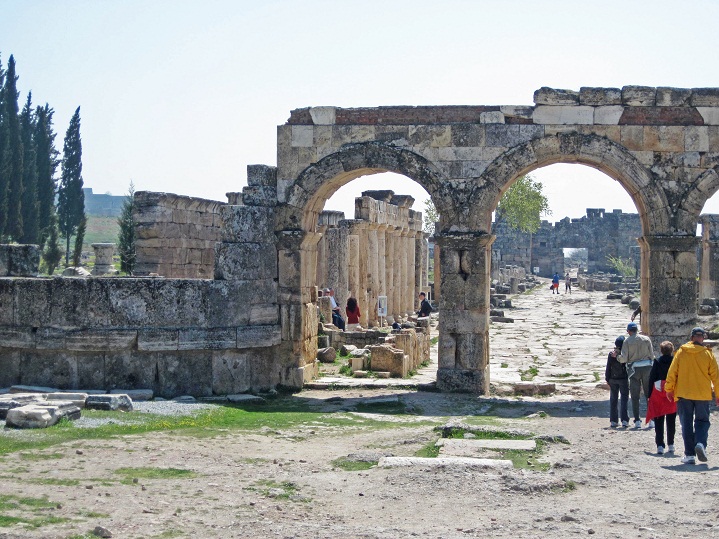
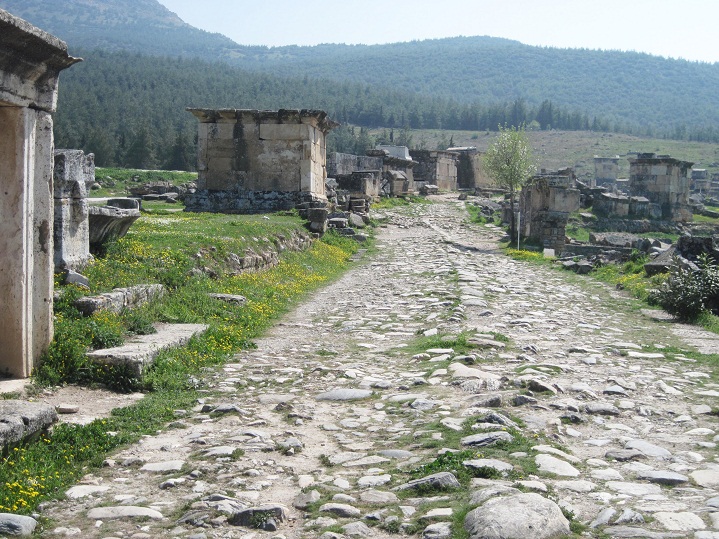
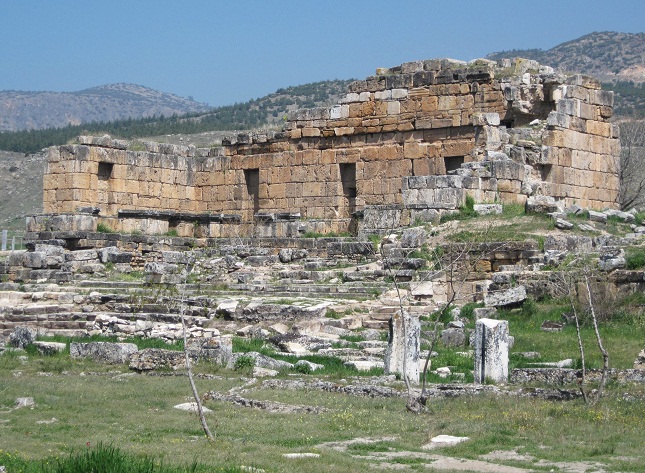
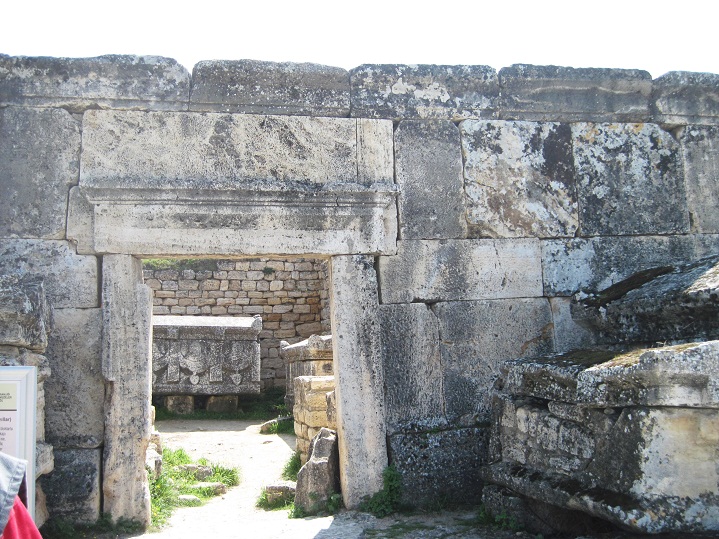
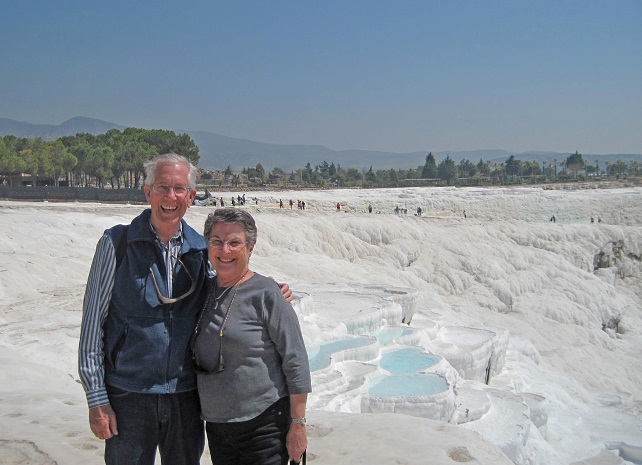
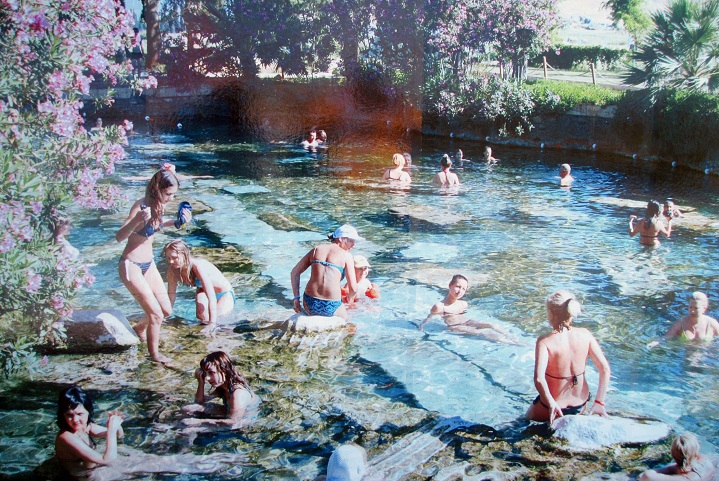
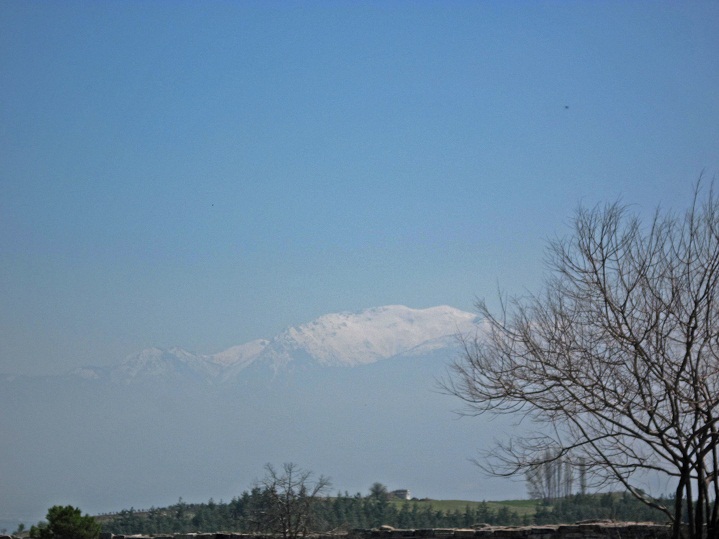
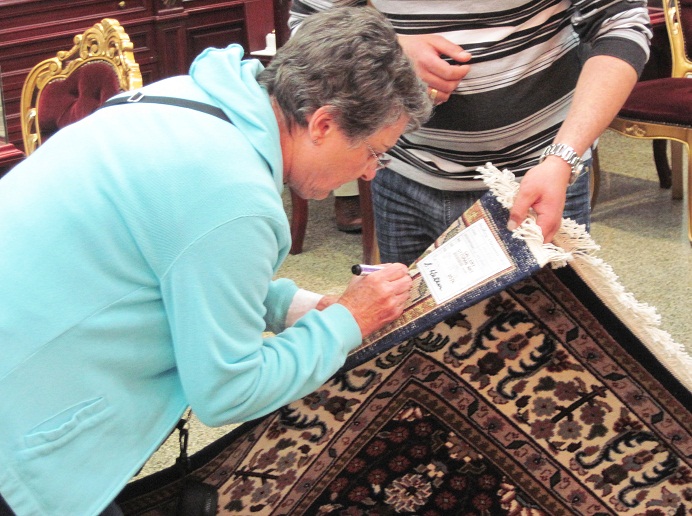
Istanbul was our next port, and we stayed there for 3 days. The arrival into the harbor was during the day but not so great, due to heavy fog and drizzle. The day brightened as it went on, and we had lots (3 days) of sightseeing here, including the Topkapi Palace, the Underground Cistern, the Blue Mosque, the Sulleyman Mosque, and the Hagia Sophia, built in 532AD. It's quite a sight, having been, over the centuries, a Christian Orthodox cathedral, a mosque, and now a museum. We had lunch at the "Pudding Shop," a Turkish cafeteria of sorts, where some scenes from the old movie "Midnight Express" were filmed. The Grand Bazaar (over 4000 shops - count 'em!) was fun to see (although Sandy didn't buy much), and on our last day in town we went to the modern (read: non-tourist) area of town where the locals live and shop for a completely different experience.
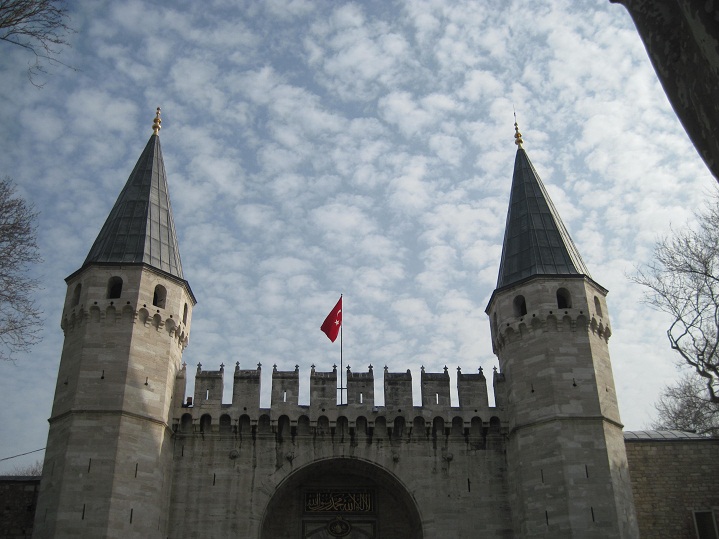
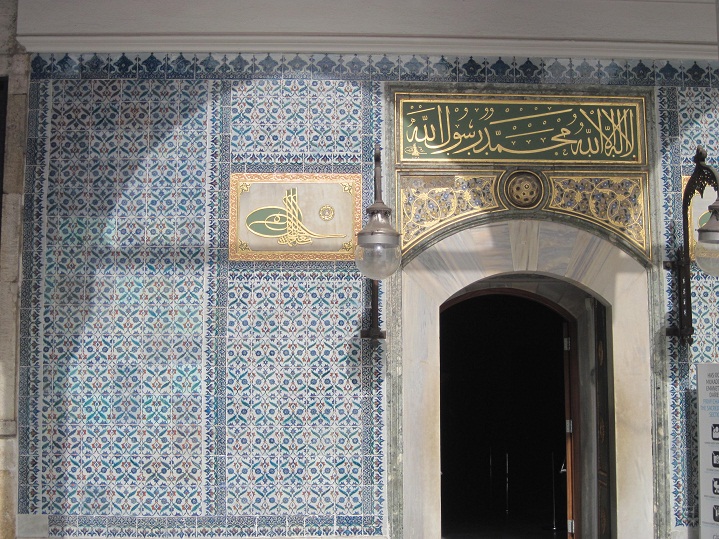
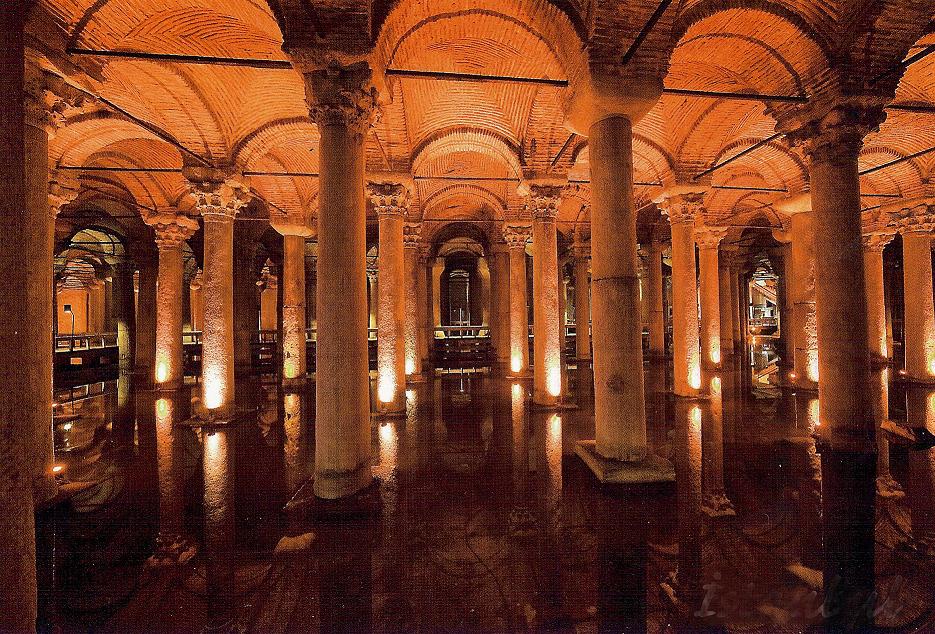
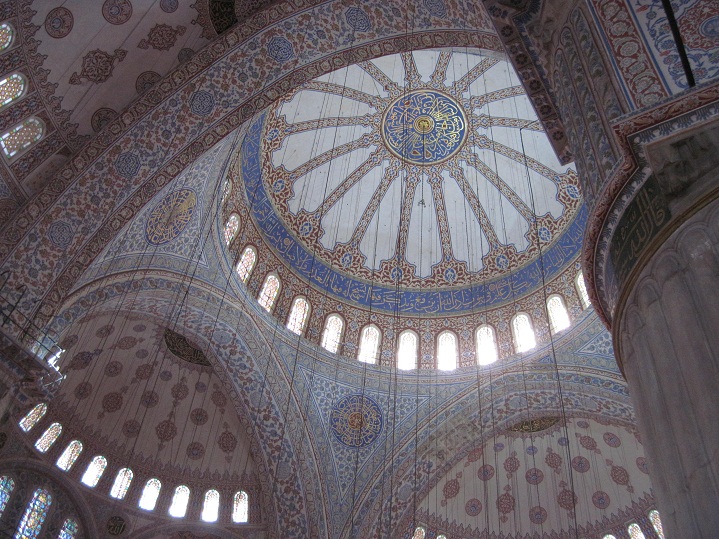
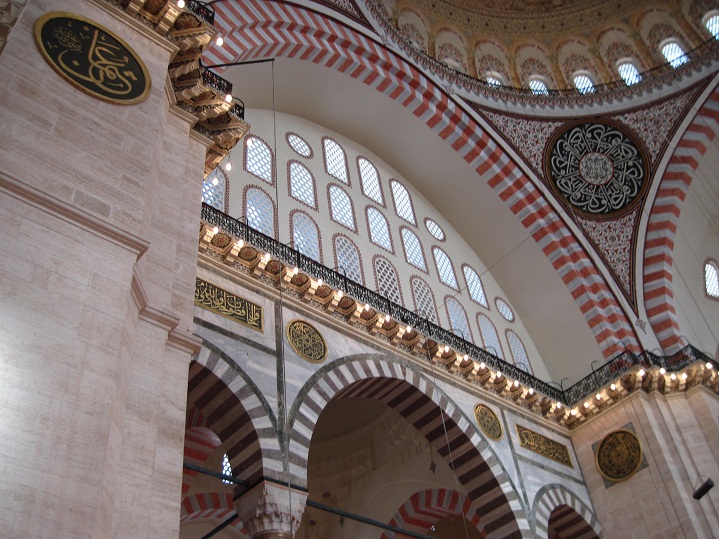
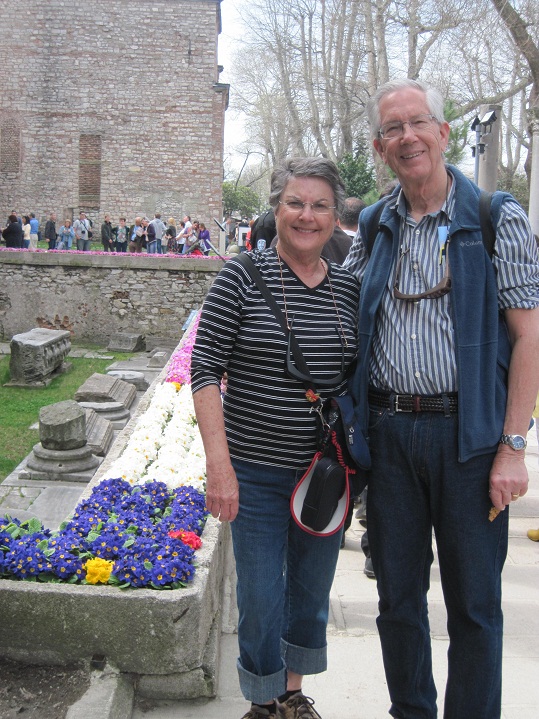
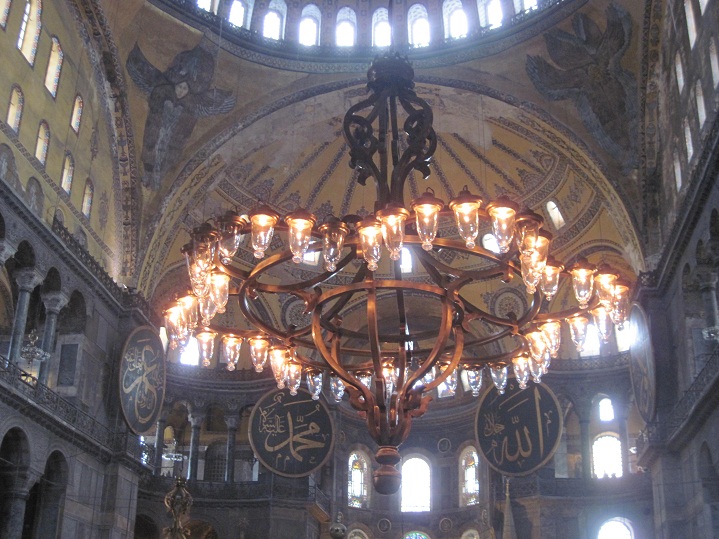
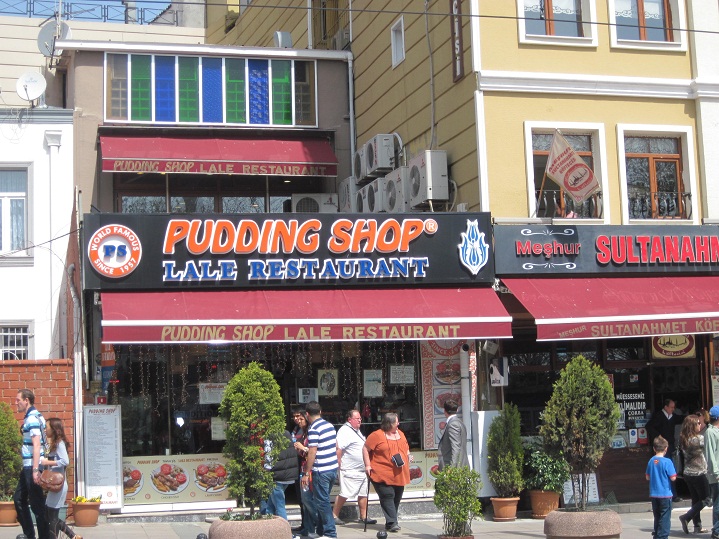
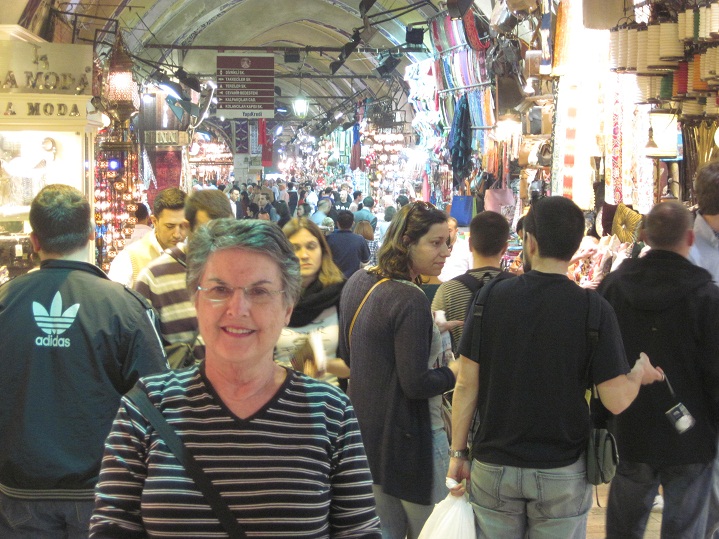
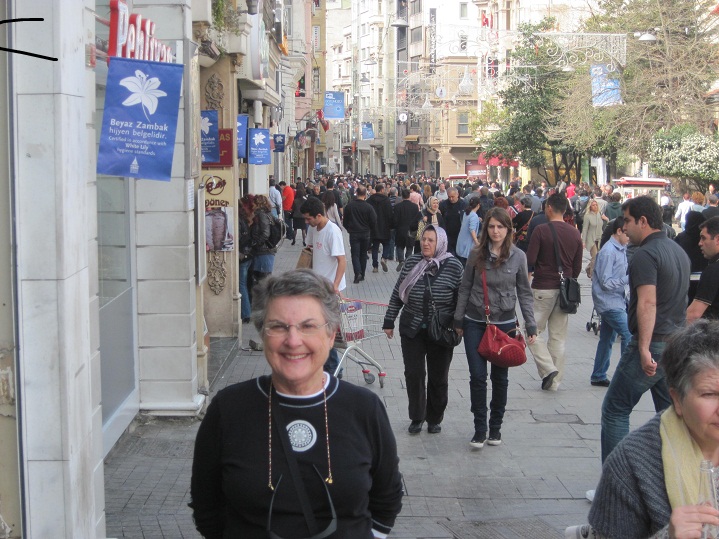
Now we headed into entirely new waters -- well, at least Mike and Sandy haven't sailed there before -- the Black Sea. First stop was in Romania, at the sea port of Costanta. (Mike and Sandy have actually been in Romania before, when they took a river boat trip on the Danube River, but only passed through Costanta to get on the river boat.) Romania doesn't have many claims to fame, but Romanian is the only active language in the world today that is largely made up of classical Latin. Mike and Sandy joined a tour of the ruins of Histria, a nearby old Greek-era city, visited the local archeological museum, and then saw a huge Roman mosaic floor floor, part of a commercial port building from around 100 A.D. On the way back to the ship, the group had a bit of levity as they passed a bank perhaps belonging to someone we've seen in the movies.
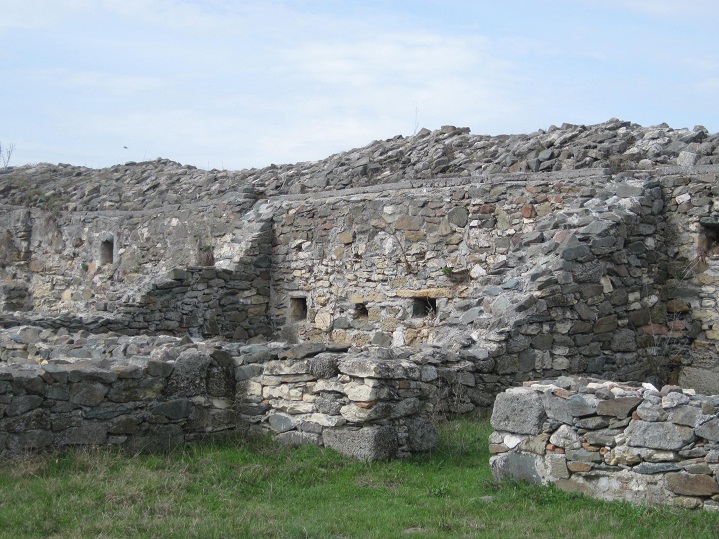
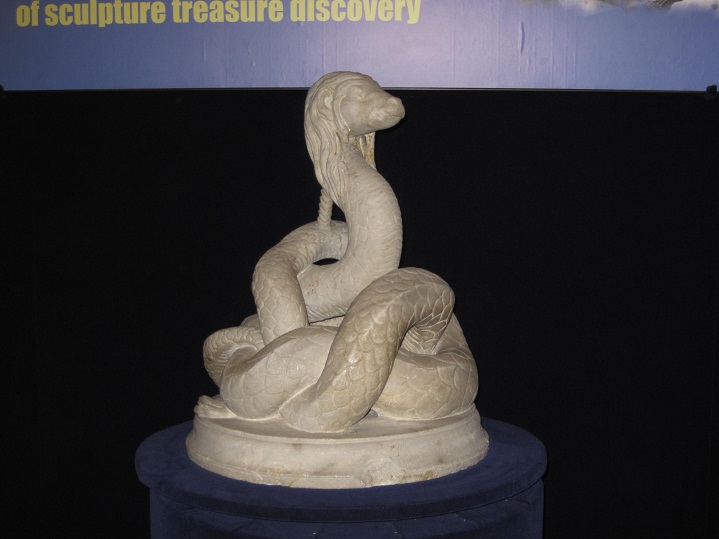
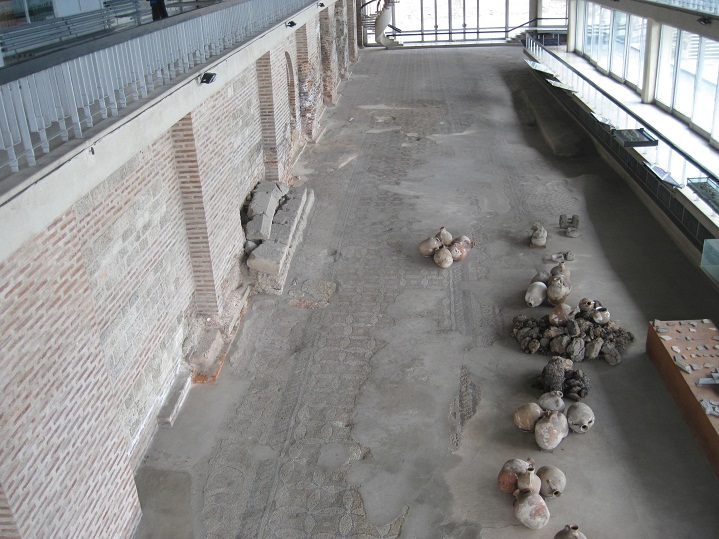

Odessa, Ukraine, was the eastern-most point on the cruise. As one of the old Soviet republics, the Ukraine has a lot of "stuck in 1950" style of construction the Russians favored, although the city of Odessa (sort of like St. Petersburg way to the north) seems to have always been a bit more international than other Soviet cities, and has lots of nice pre-Soviet architecture. Their Opera House, for example, was built by architects from Vienna in the late 1800's, and is one of the best in Europe. Sandy took a look at the catacomb-like tunnels under the city (the city sits on limestone rock), while Mike toured a nearby monestary that was one of the few religious instituions that operated all during the Soviet times. The Potemkin steps (which played a small role in the Russian revolution back in the early 1900's), are an interesting design - quite long, they appear to be in a straight line , but this is an optical illusion, as the steps near the bottom are about twice as wide as those at the top.
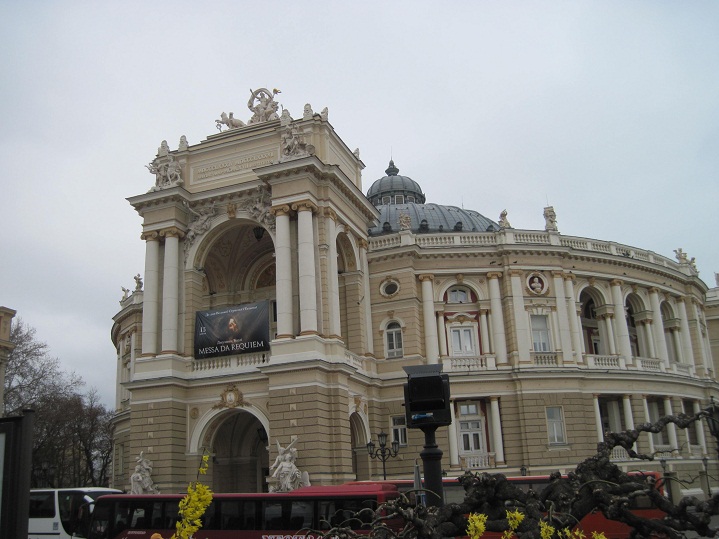
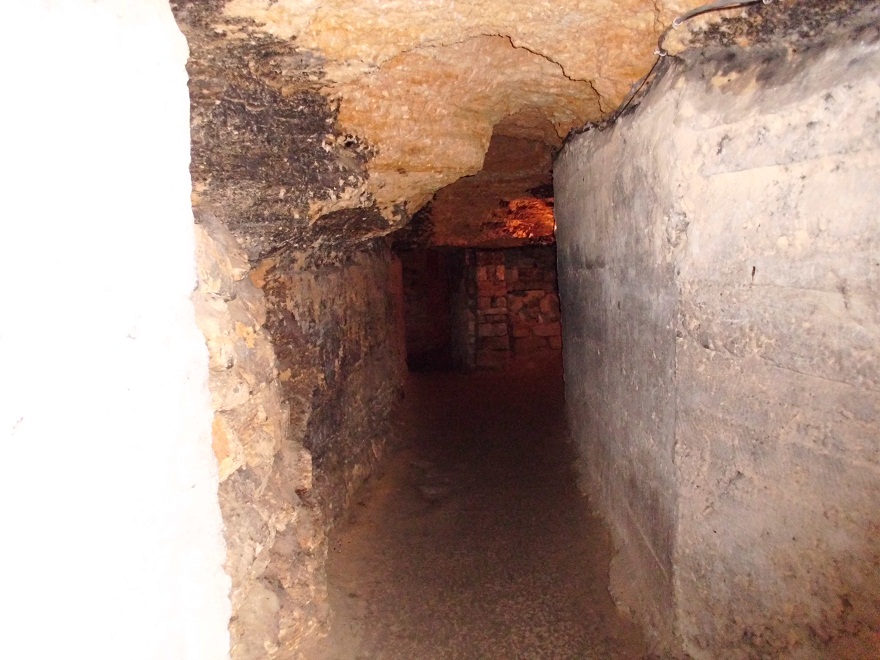
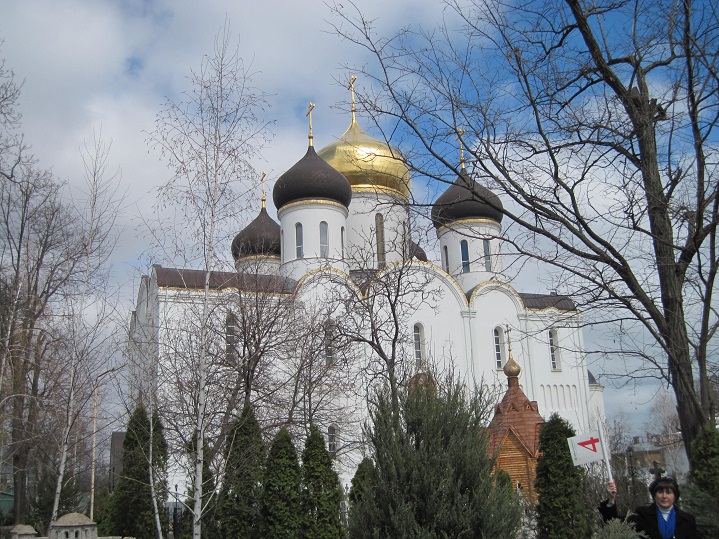
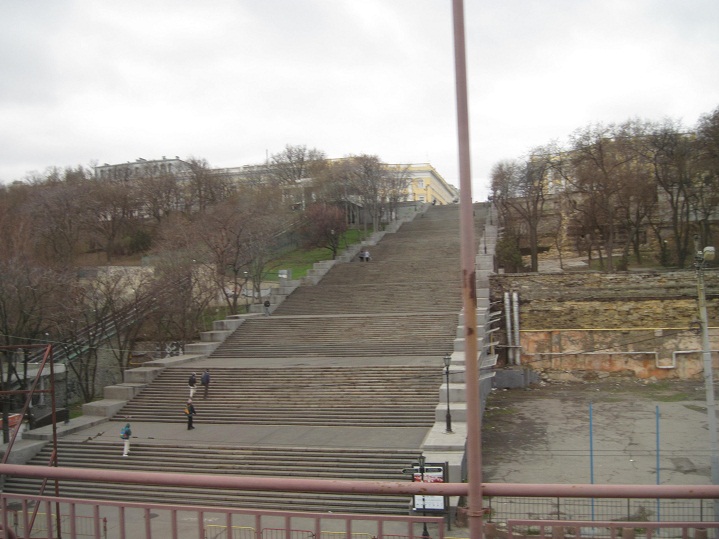
Our trip back towards the Mediterranean was interesting, as most of our trip through the Bosphorus and Dardanelles narrows was during daylight. You can see the tall buildings of Istanbul even before you enter the Bosphorus straights. In the Dardanelles, there are several memorials and monuments visible related to the Gallopoli battles of World War I.
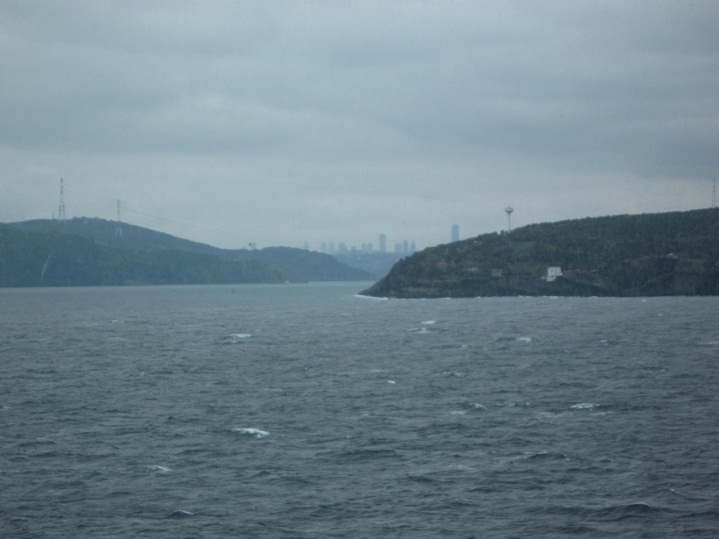
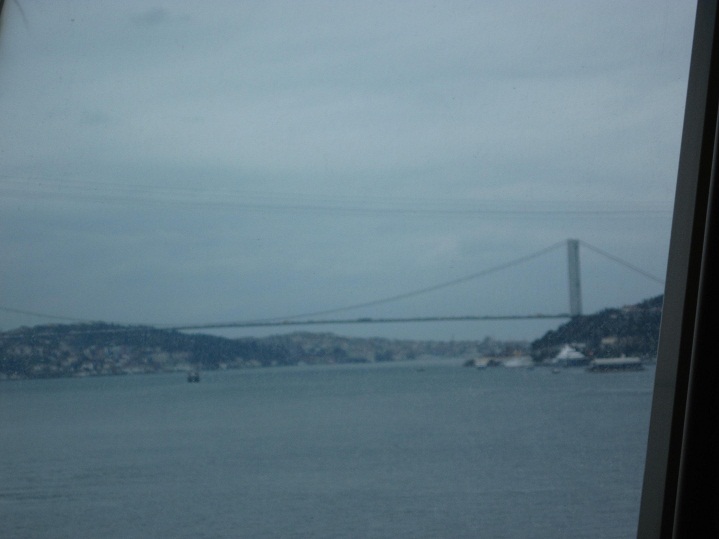
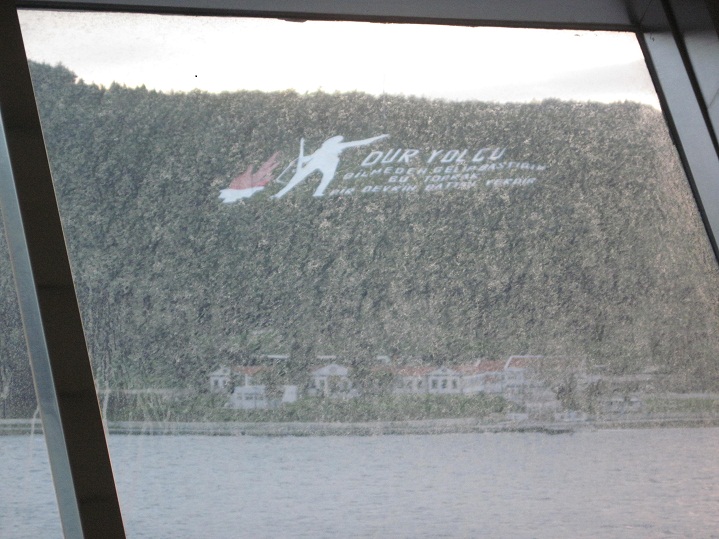
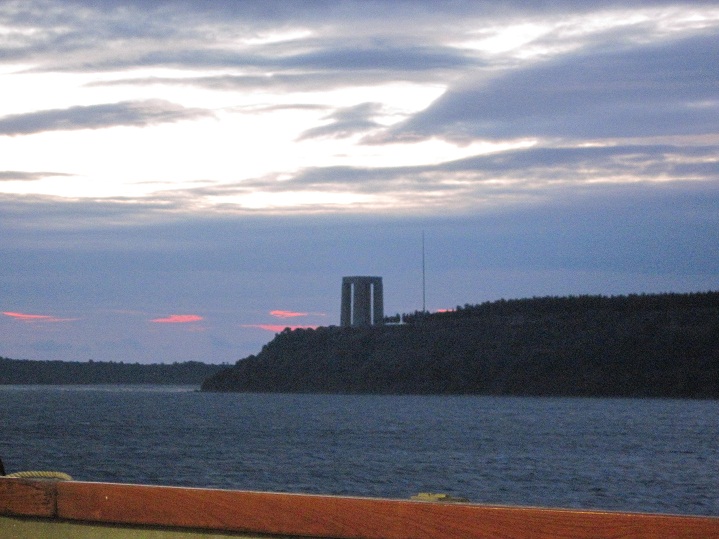
Now it's back in the Mediterranean, as we head for Athens. Having been there recently, Mike and Sandy opted for an all-day tour out to the Corinth area, as in the Bible's Letters to the Corinthians. We visited ruins of a hill-top fortress from the Mycenaean period, and a "beehive" shaped burial tomb from as early as 1600 BC was quite unusual. We had lunch at a cute sea-side town before visiting the nearby Corinth Canal. Back in Athens the next day, we visited the Plaka ("old town") area, where we saw a clever mime and Sandy did her part to help the struggling Greek economy.
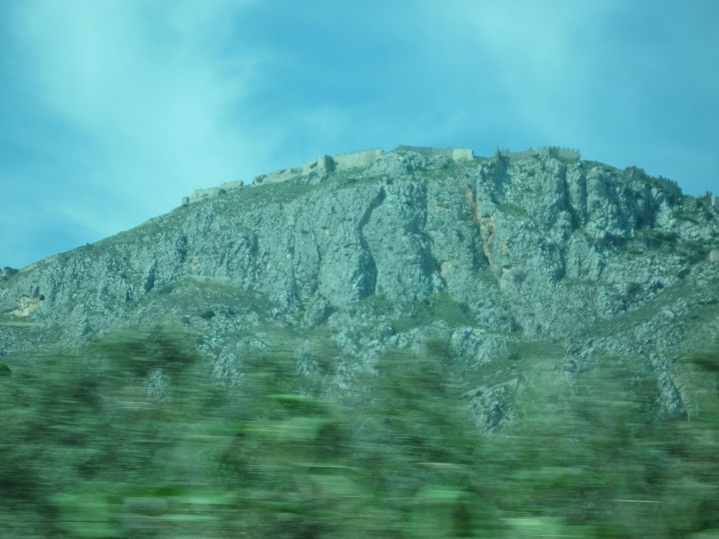
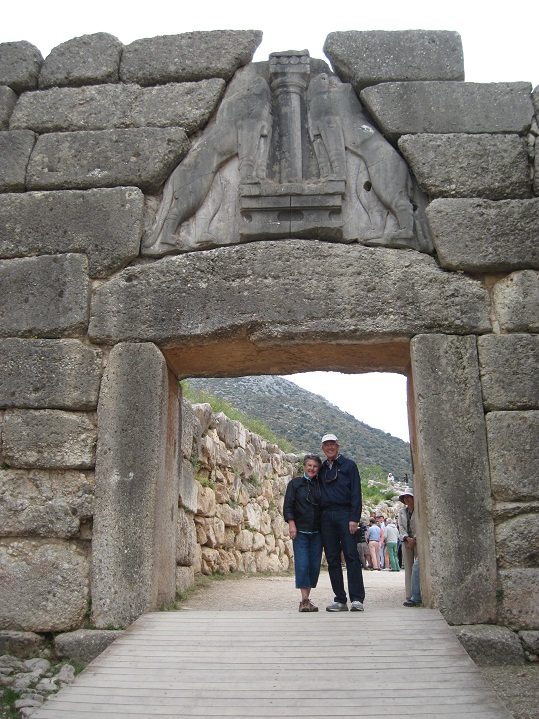
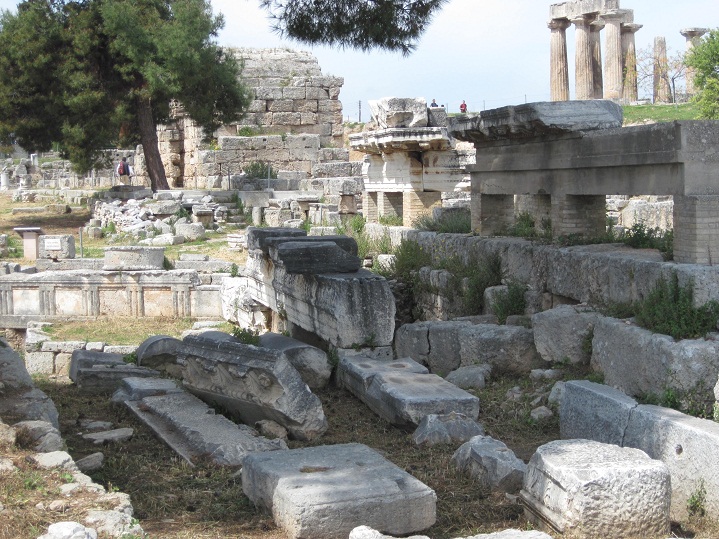
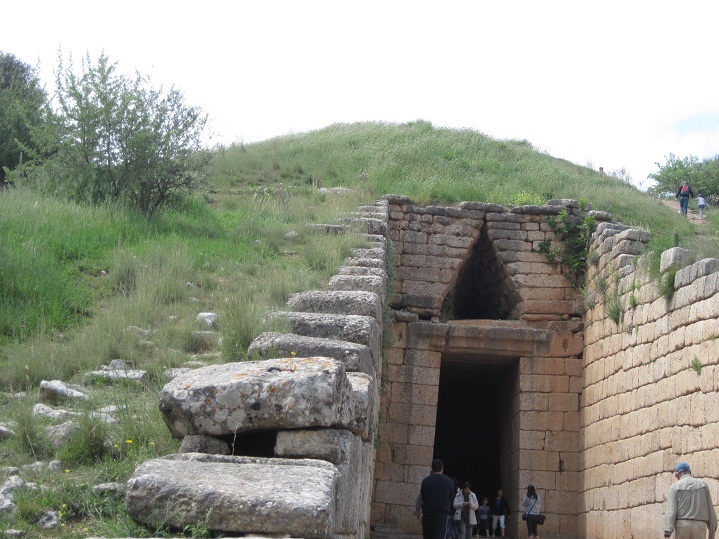

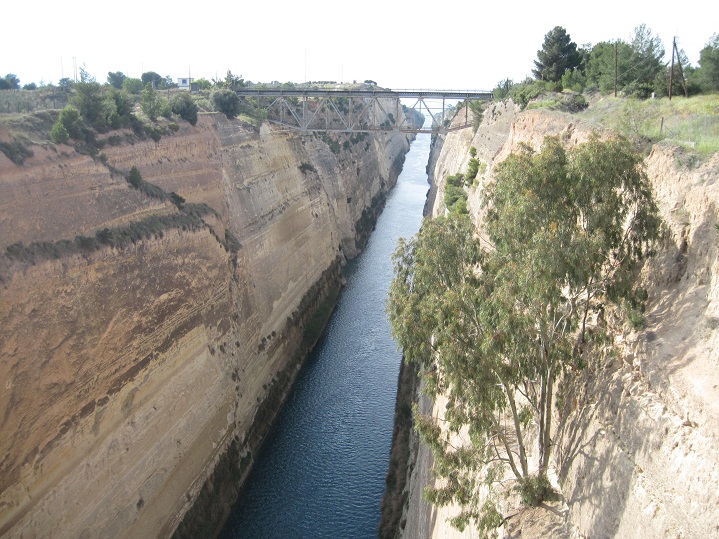
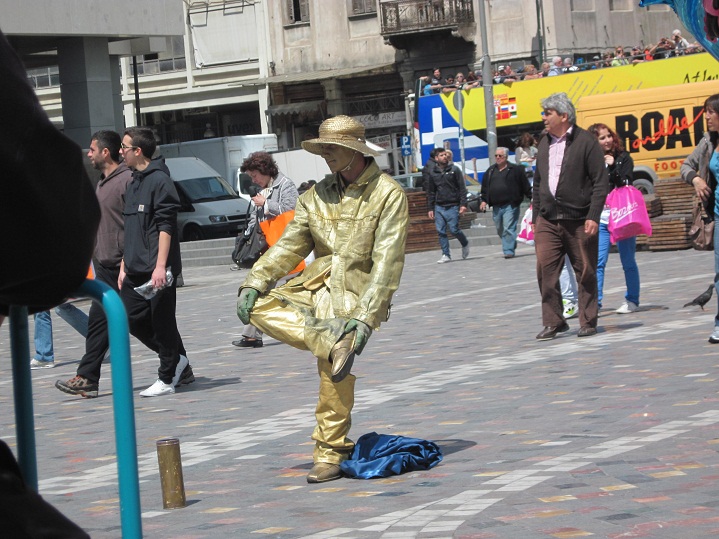
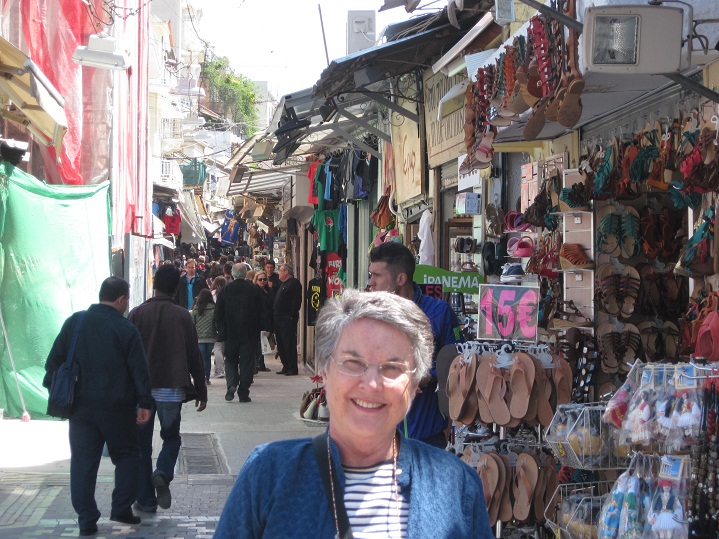
Forgetting history for a few days, the next stop was the tourist island of Santorini. (This is where late one afternoon in 2011 Sandy was shoved against a wall by a line of eager-to-get-to-dinner donkeys heading for their stables.) We didn't do any tours, but just enjoyed the sights and shops, catching up on some email at a cliff-side coffee shop.
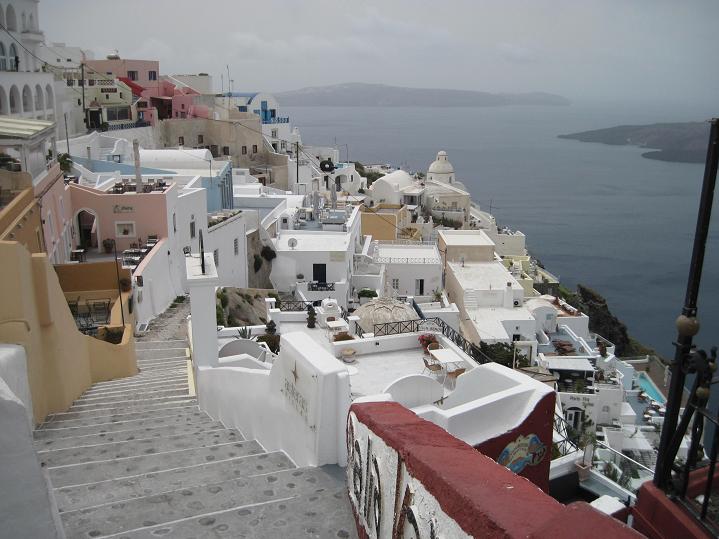
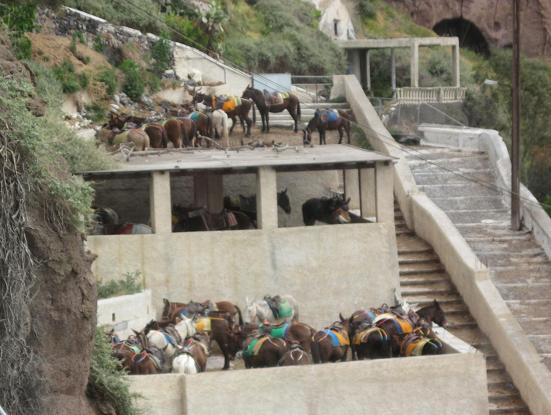
Another Greek port, Argostoli, was next - completely new to Mike and Sandy. This is a little town on the little island of Kefalonia off the west coast of Greece, with agriculture and holidays (mainly folks from further north in Europe coming for a week or two). We took a ride on an underground lake, visited a cute fishing village, and admired beaches way down a cliff from the road.
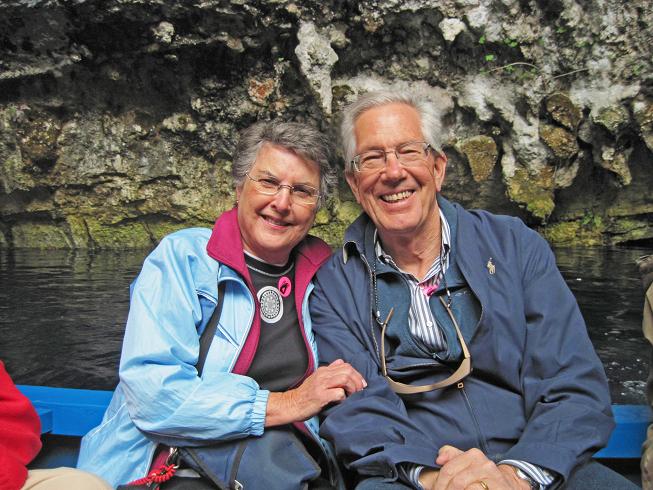
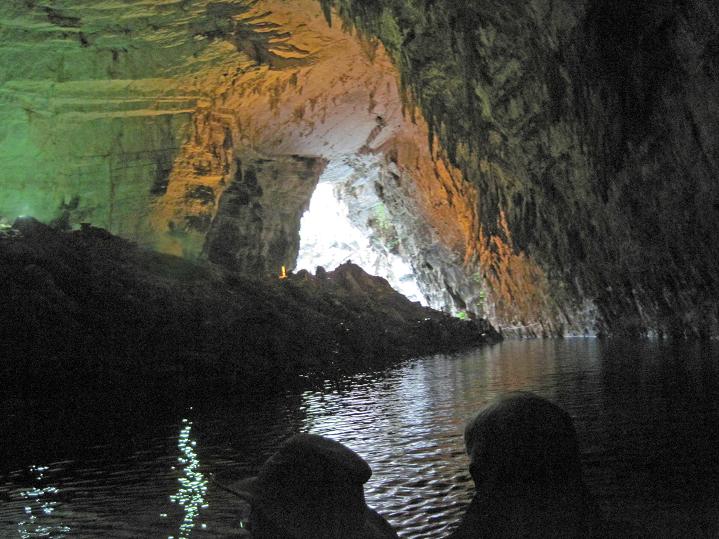
Another new port for Mike and Sandy was Durres, Albania. Durres is a dreary industrial port, with little of interest to tourists. (There was an amphitheater in Roman times, but only a small part of it has been excavated -- what you see is mainly dirt and weeds, with lots of imagination required about what is still buried.) We drove inland to Tirana, the capital city, which is a bit more inviting - it has a quite nice museum, built by Italy as a gift to the country, of the history of Albania. All in all, this day was a sad example of what socialism under the old Soviet Union did to people and countries. (On the other hand, Mother Teresa was born in Albania.)

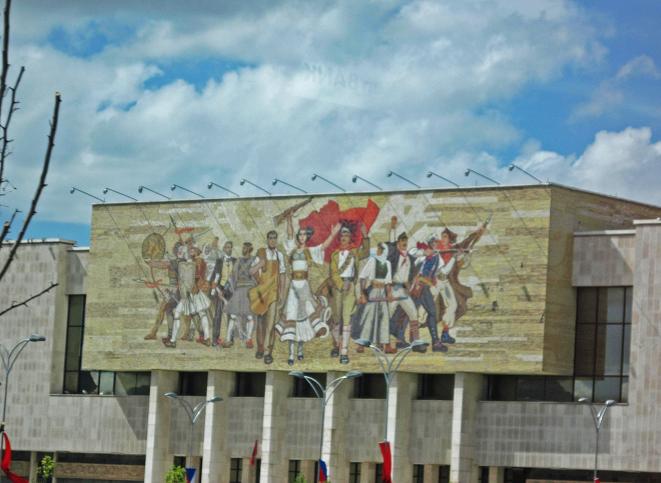
In Croatia, Mike and Sandy have enjoyed several visits to the medieval walled city of Dubruvnik over the years. This itinerary called at a small island called Korcula, which featured beautiful scenery, quaint fishing villages, and a small wine industry.
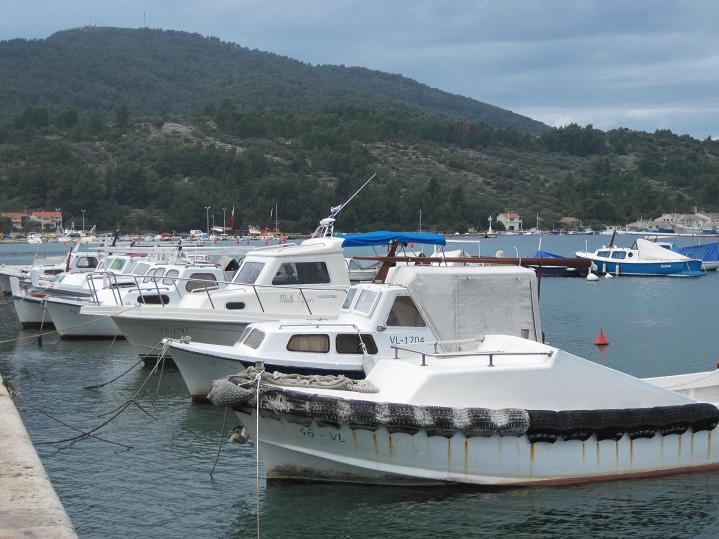
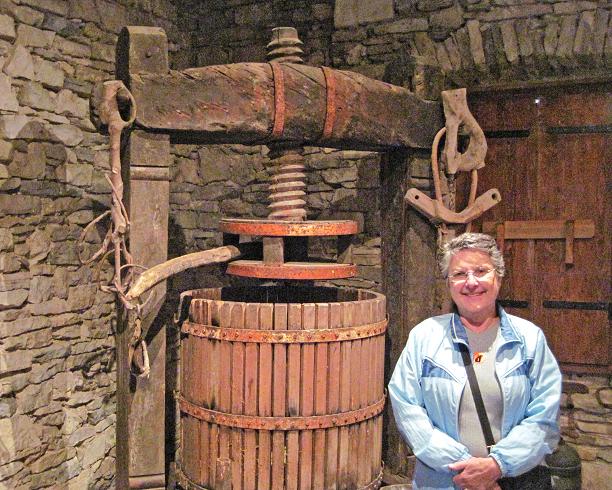
Sandy and Mike have been in Venice a number of times over the years, but had never sailed into the Harbor. Seeing Saint Marks Square from the water side was impressive (and imagine what it must look like for pedestrians to look up and see the "tallest building in Venice" sliding past them on the water).
The Prinsendam will continue on, heading back towards Florida, but after more than a month of sailing, Sandy and Mike were ready to jump ship. They checked into a Courtyard by Marriott right at the Venice airport, and then took the water bus ("vaporetto") into town. Venice is always a fun place to visit, and we enjoyed several hours walking around the narrow lanes. After a little bit of shopping (Sandy remembers all the best shops on five continents), Sandy and Mike had a quiet evening of rest, and the next morning were off to home via Munich on a big shiny Lufthansa bird.
